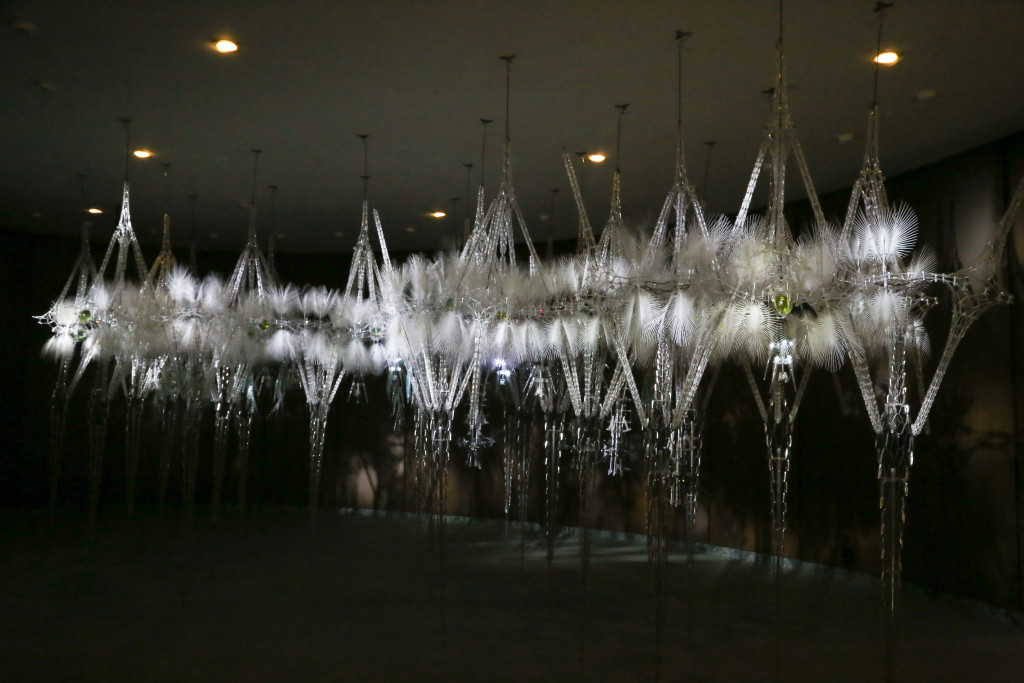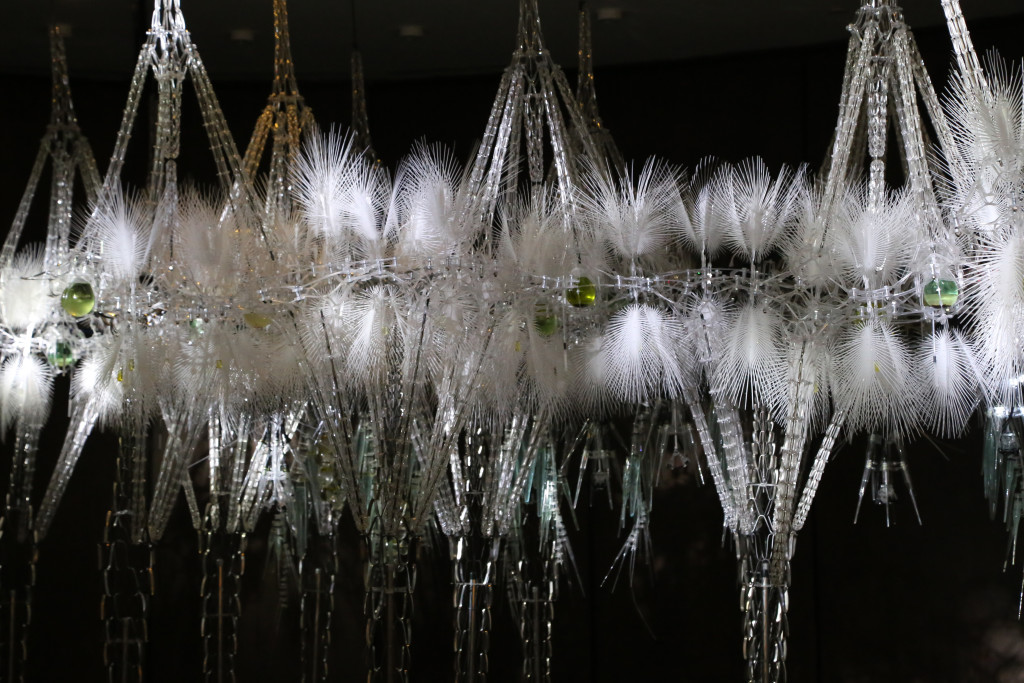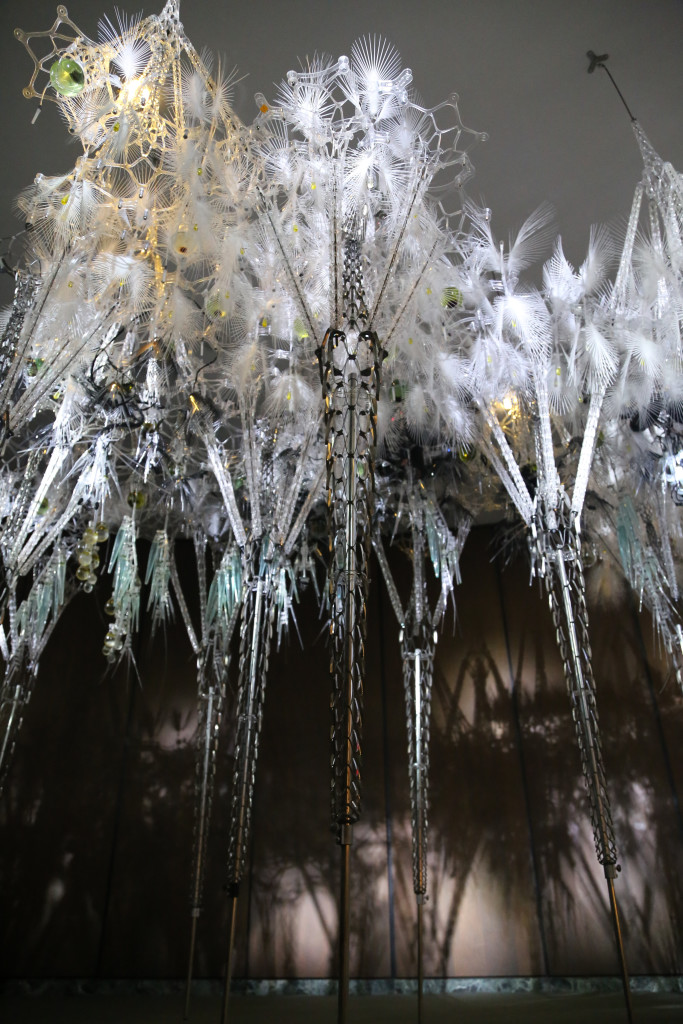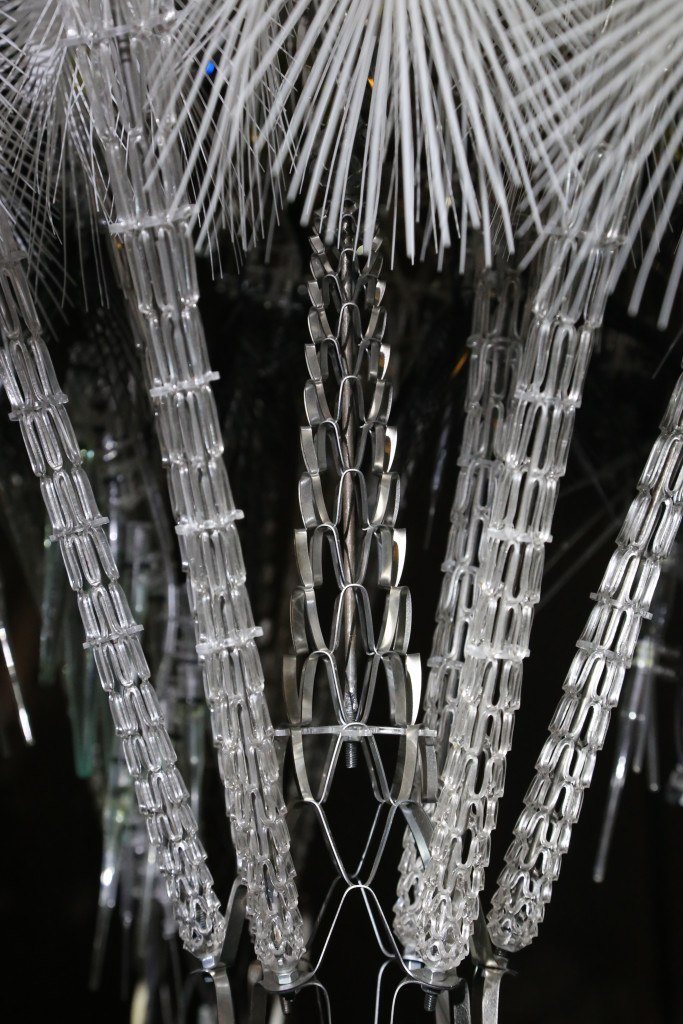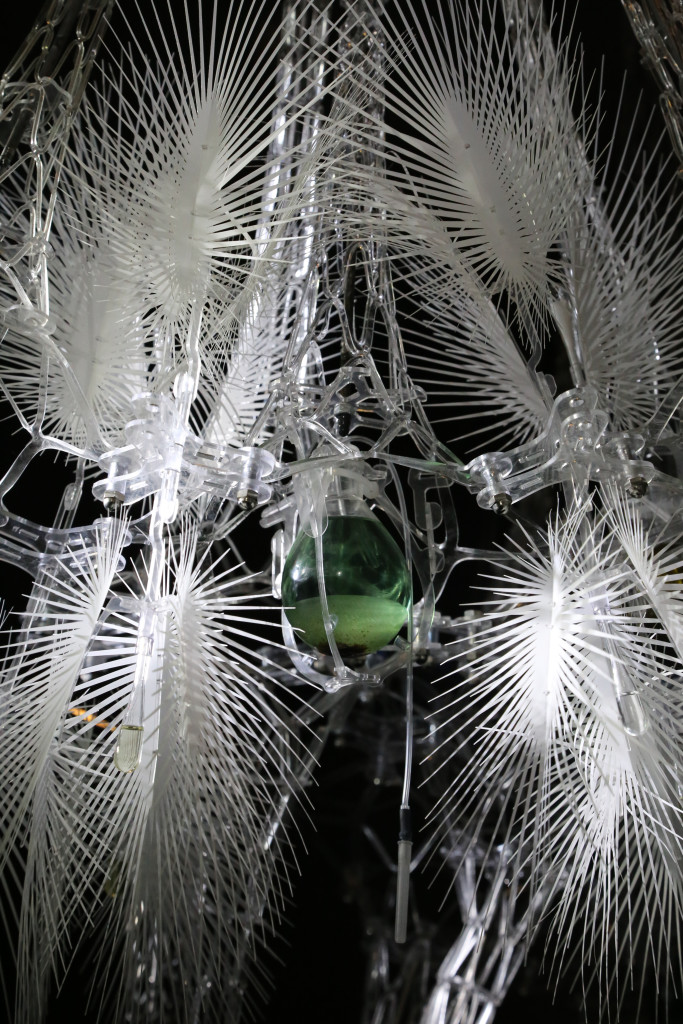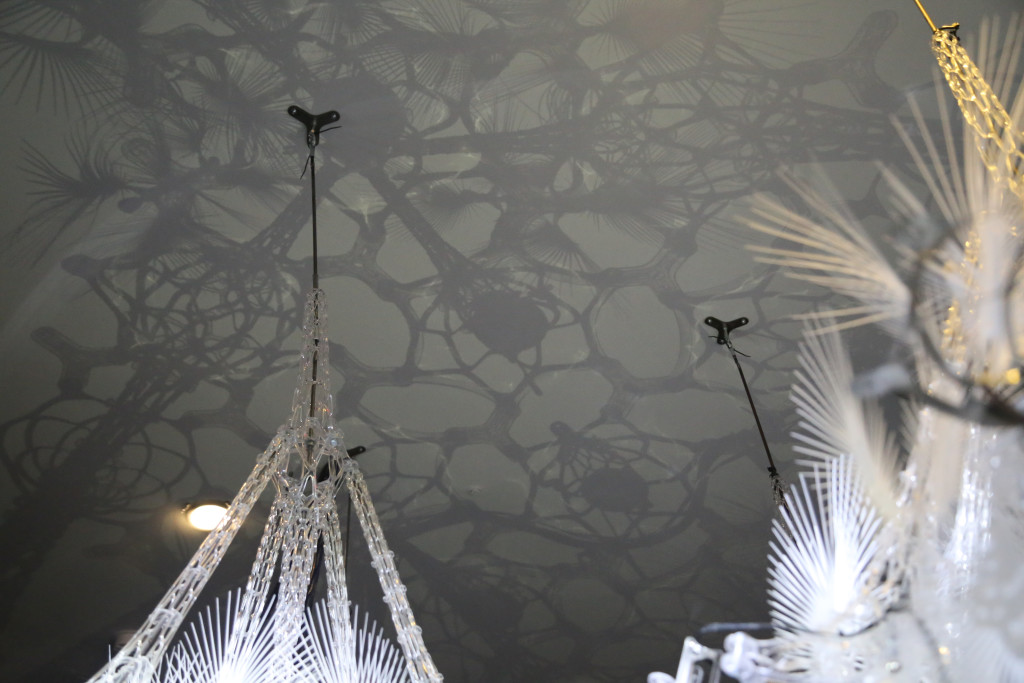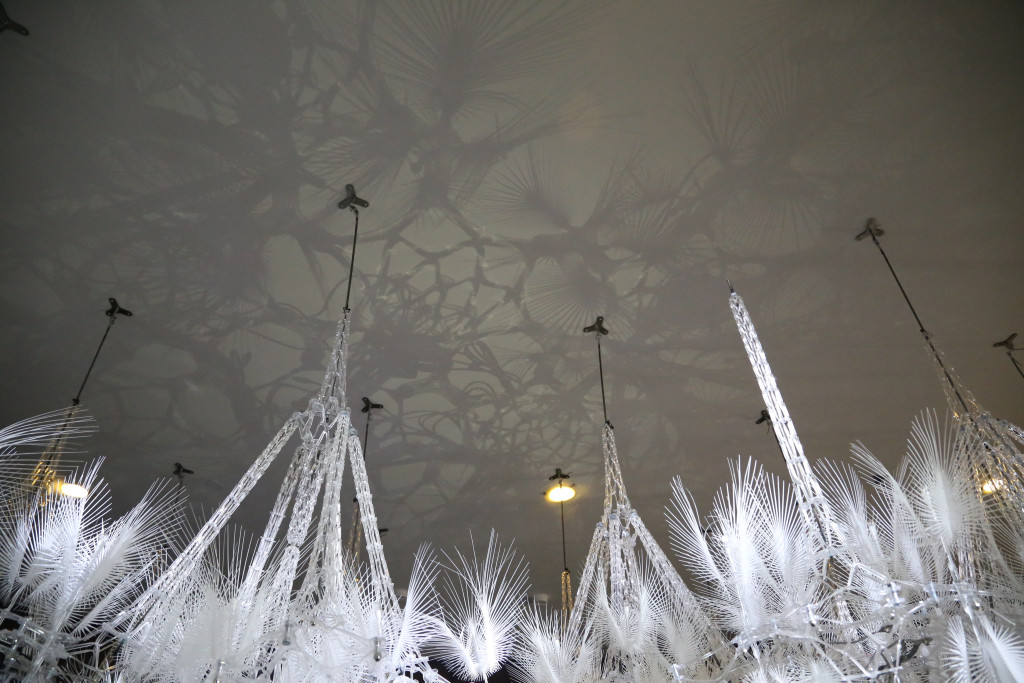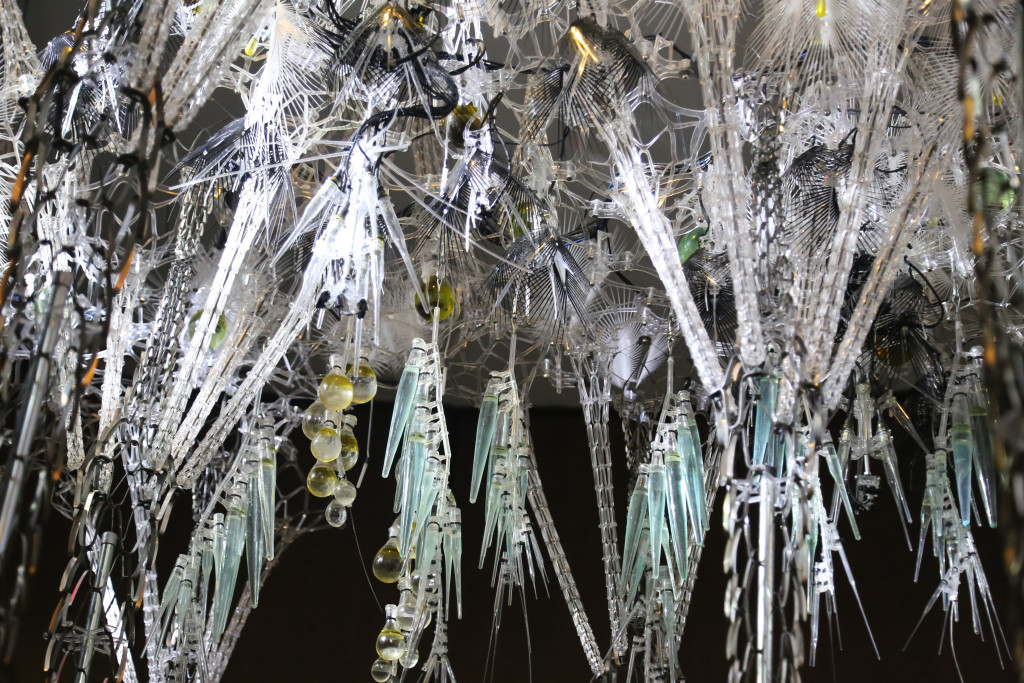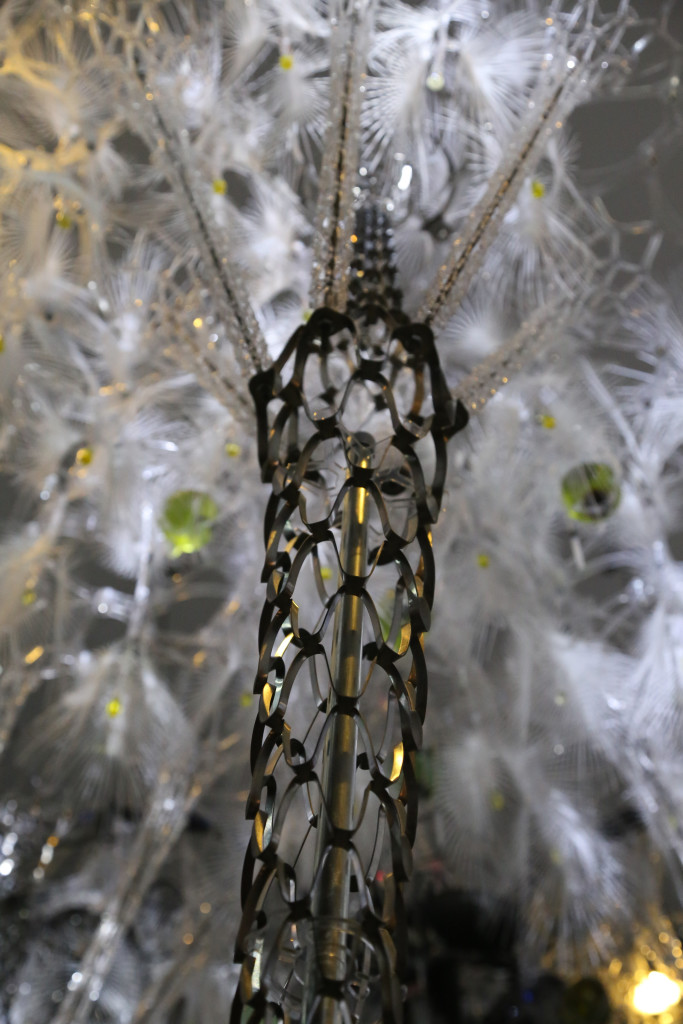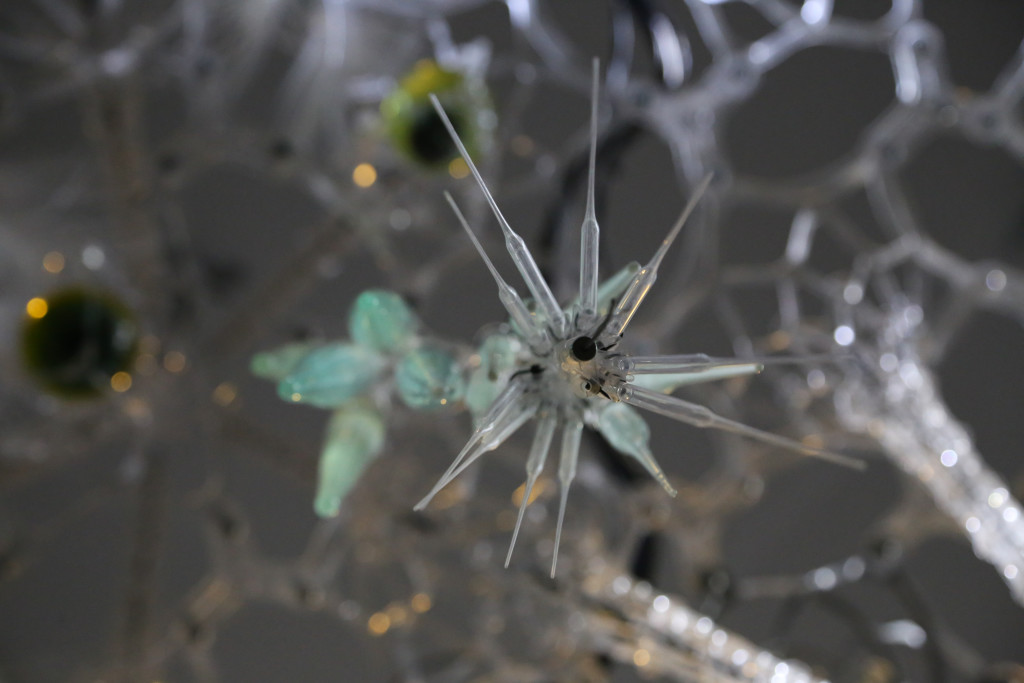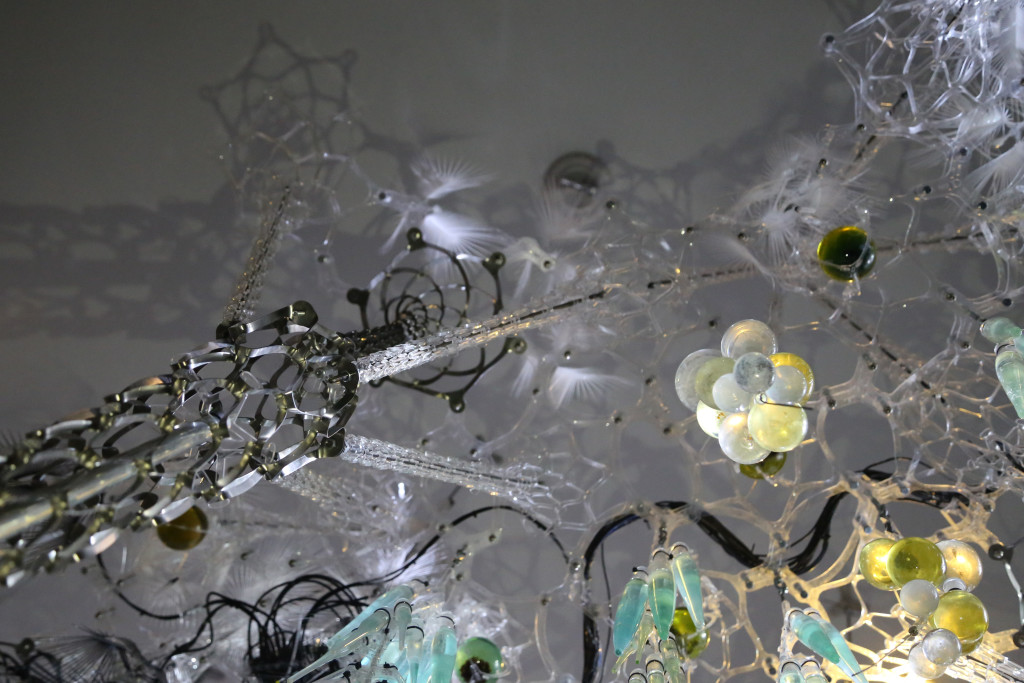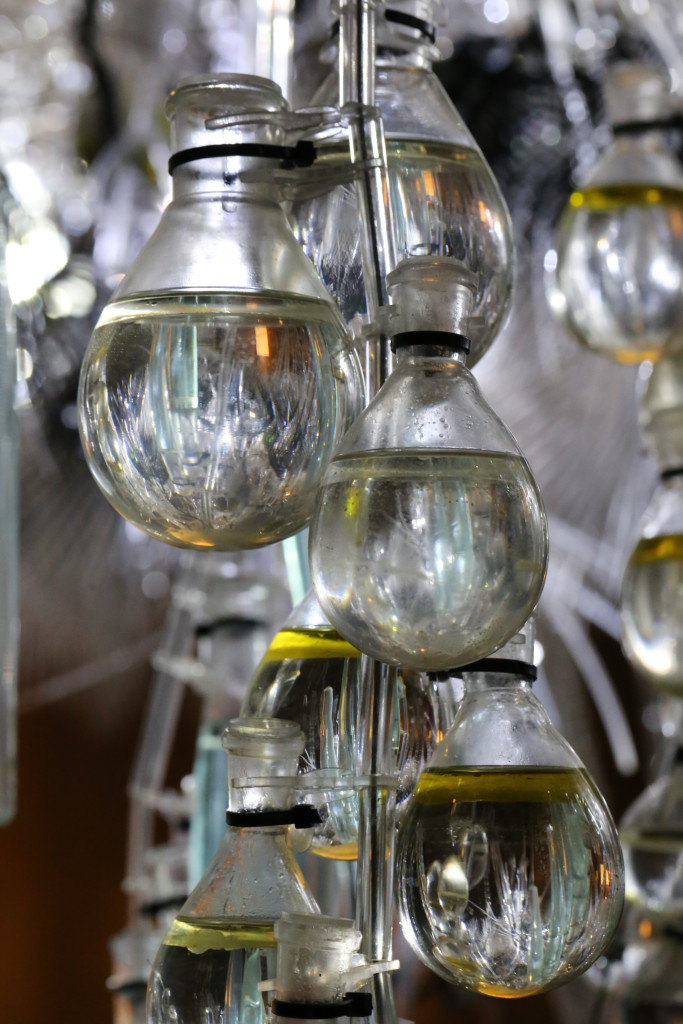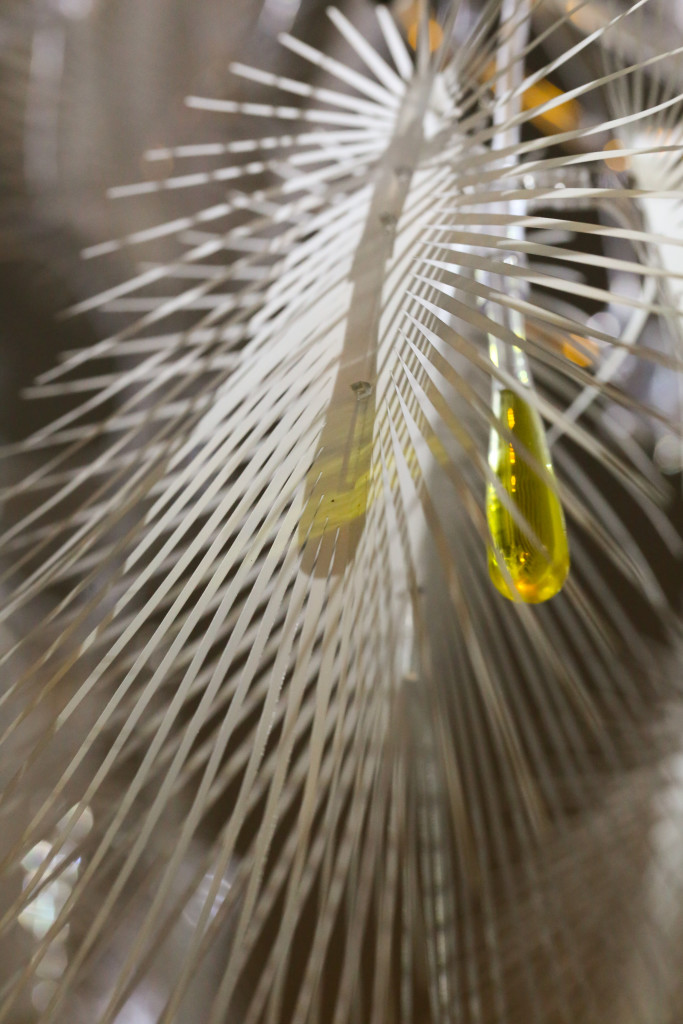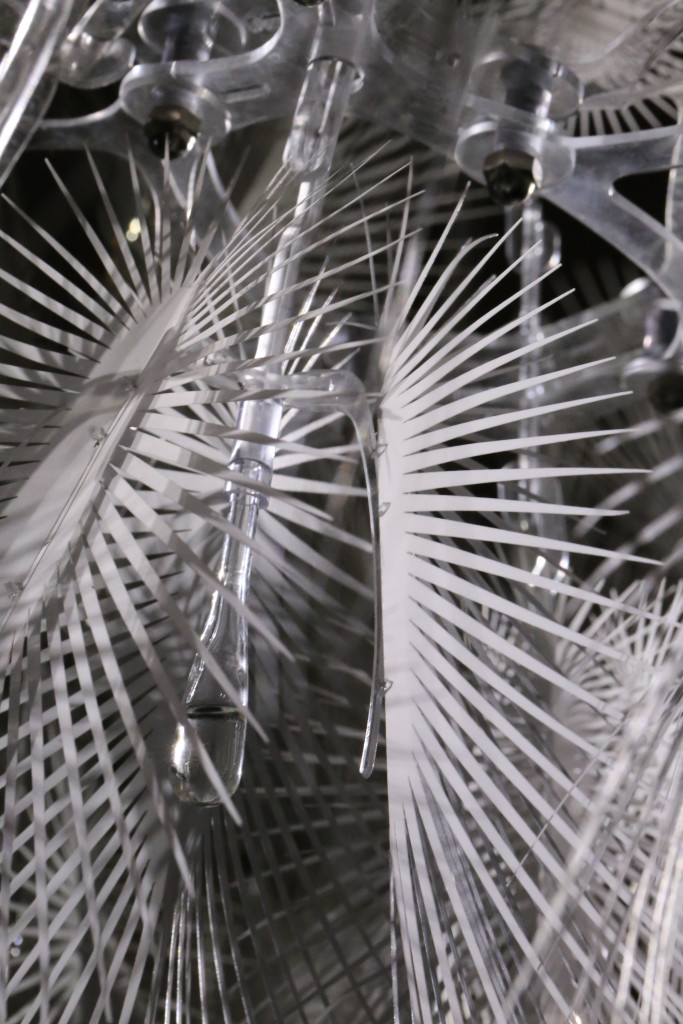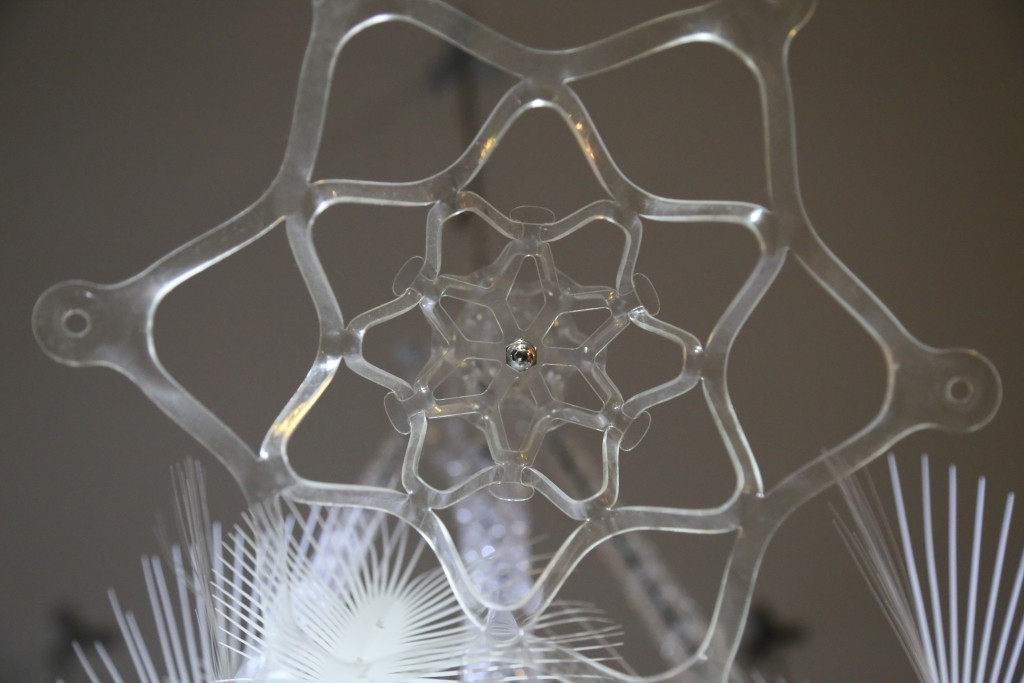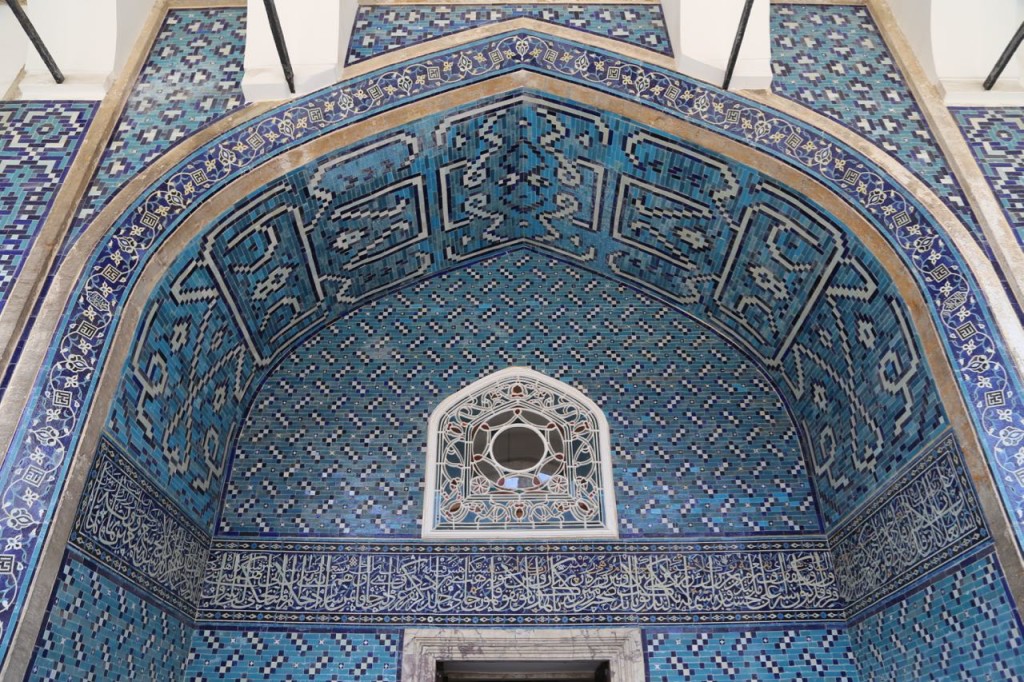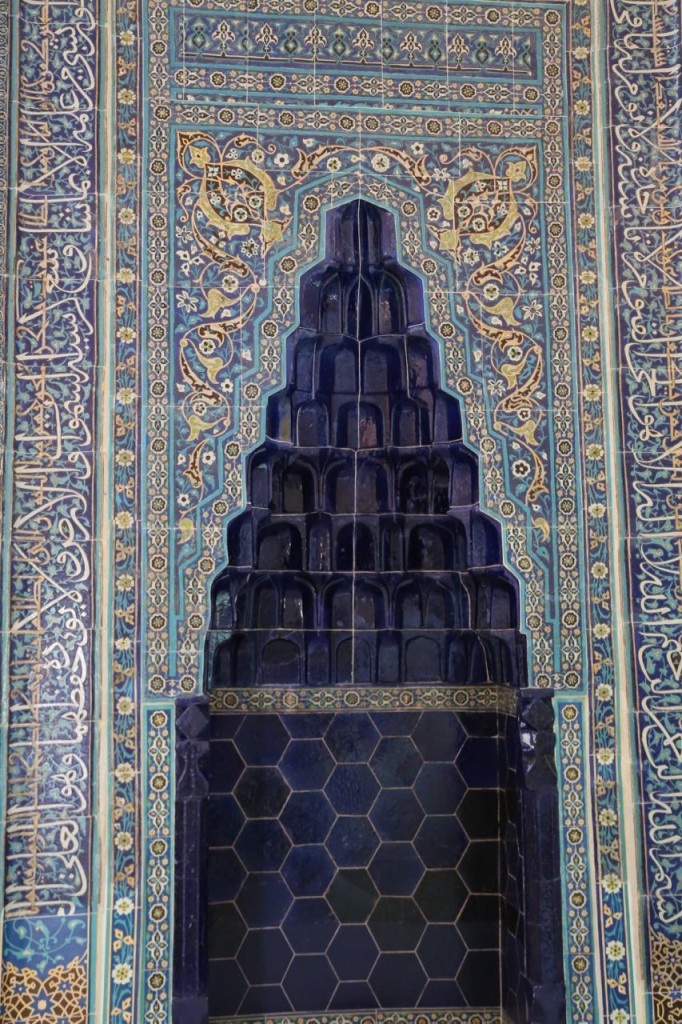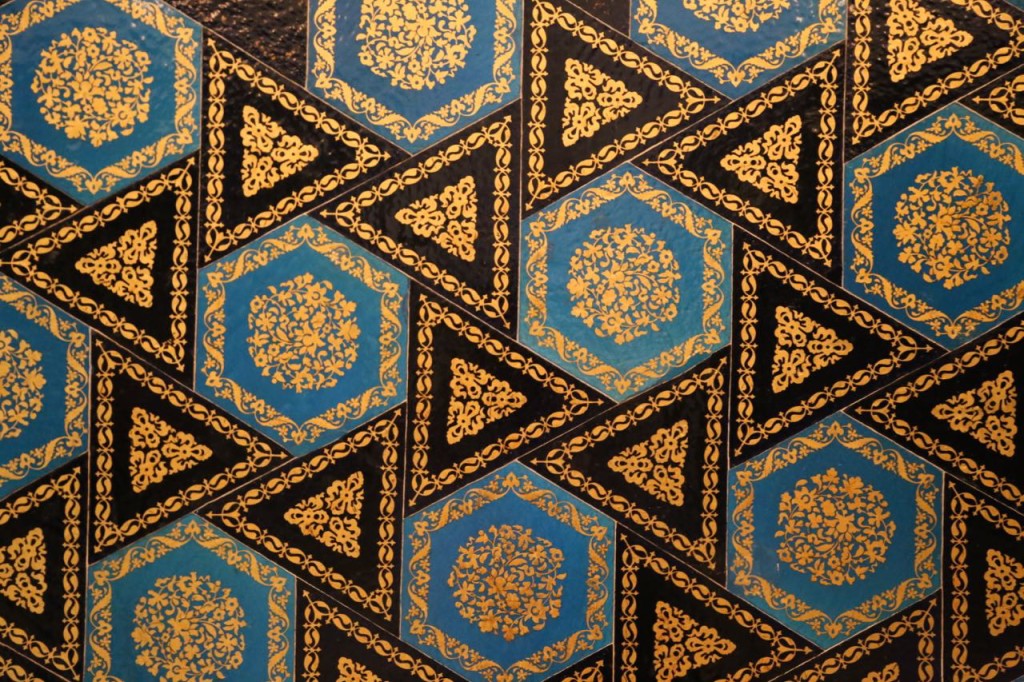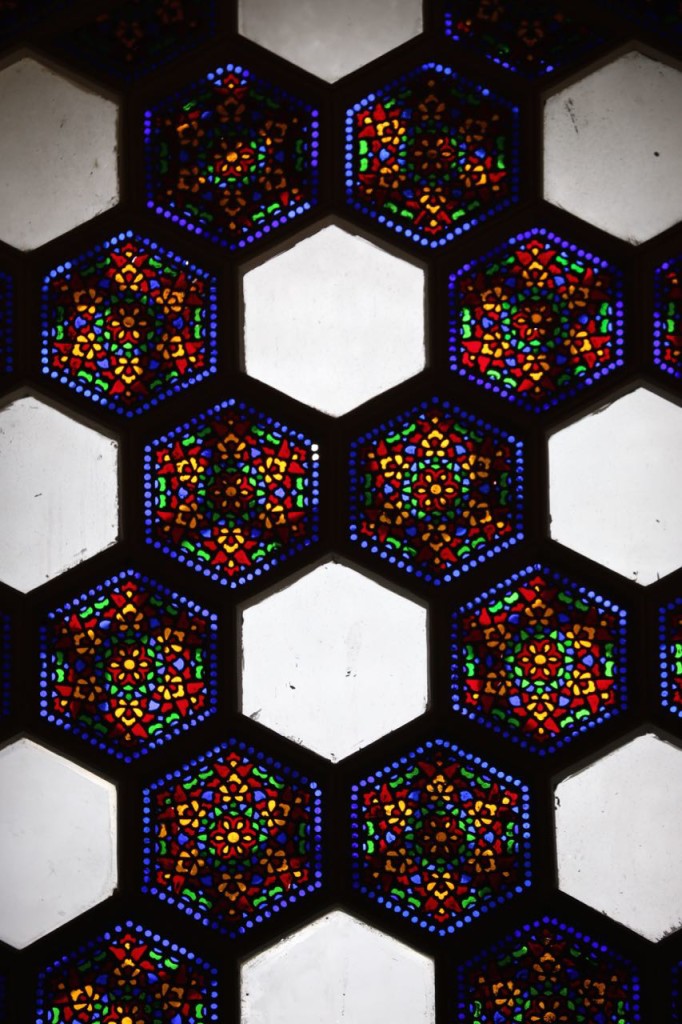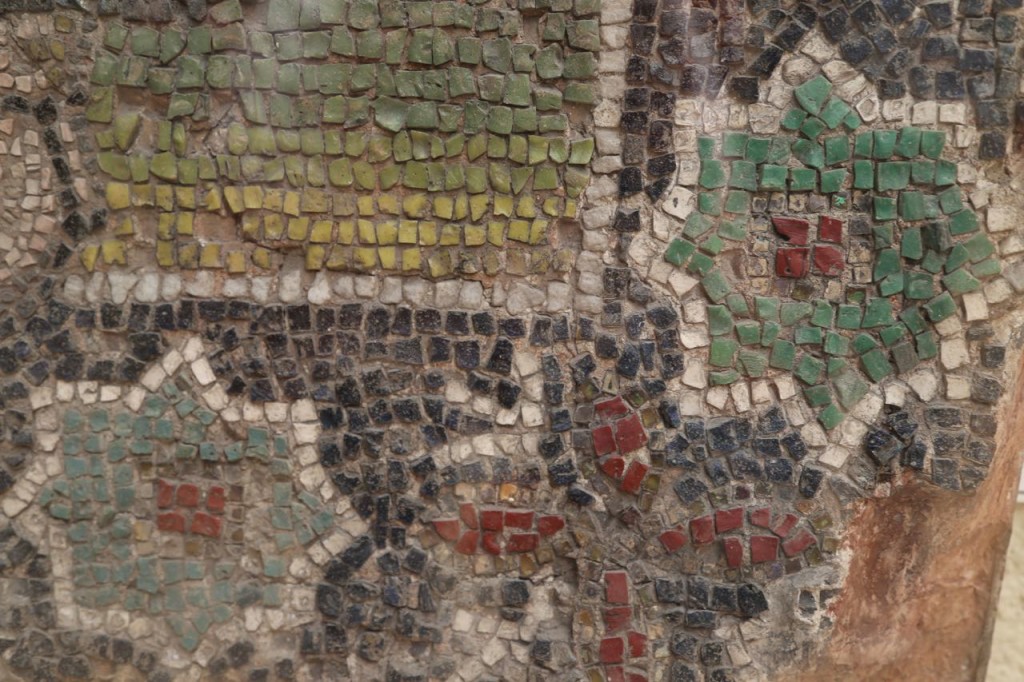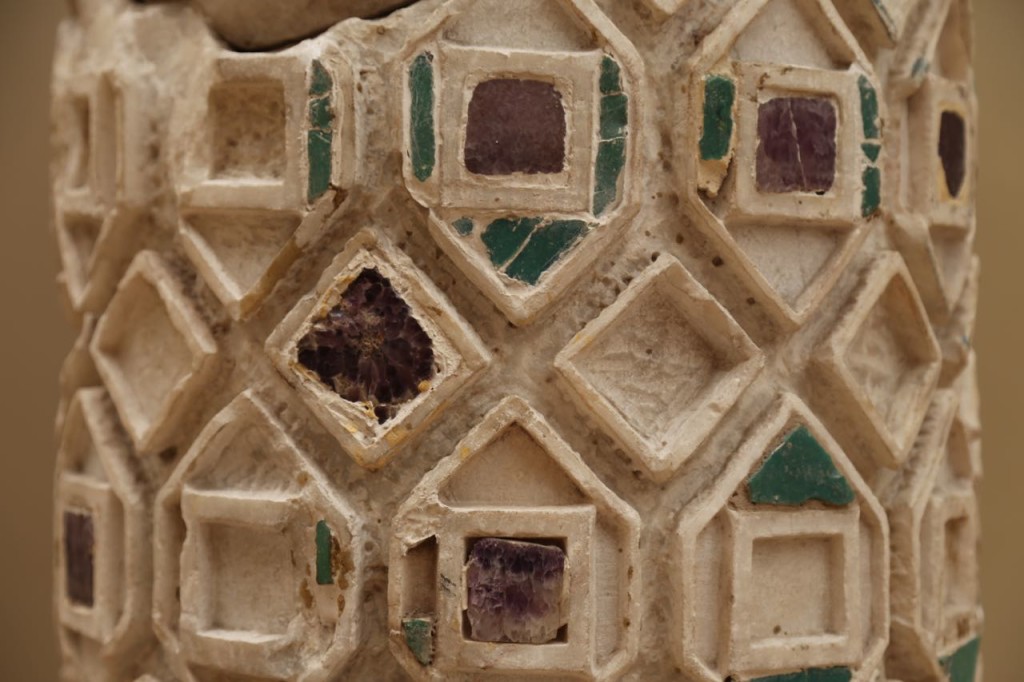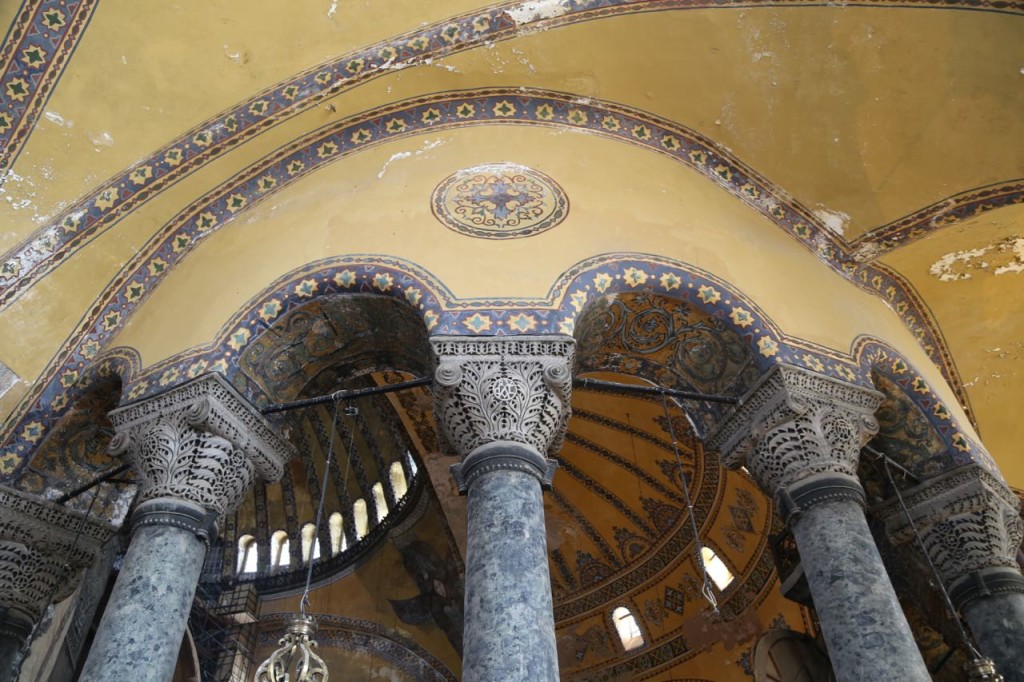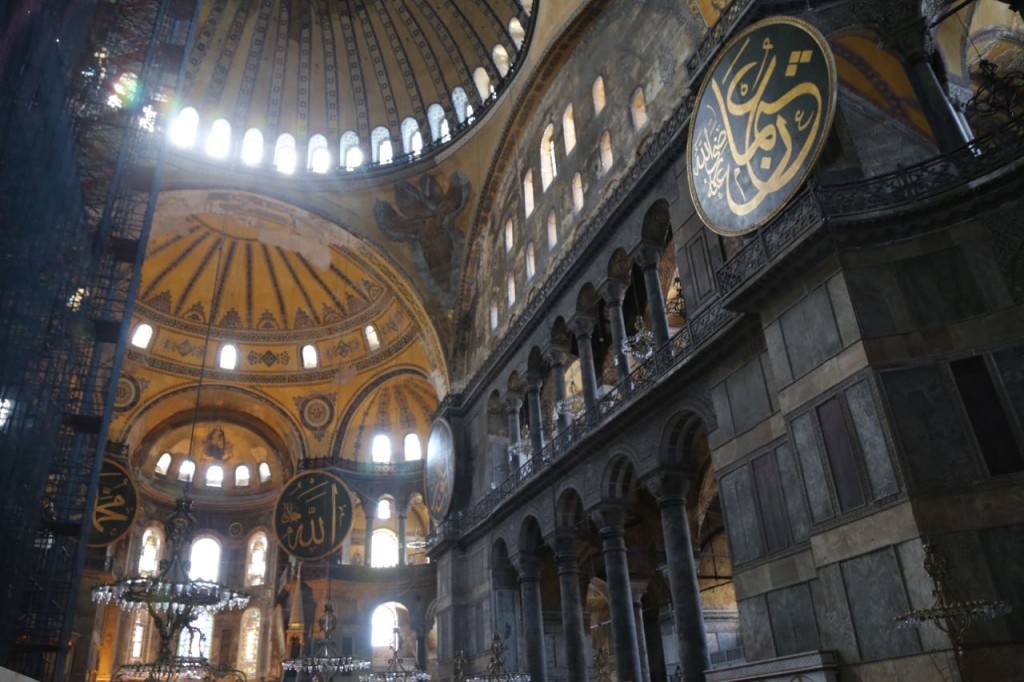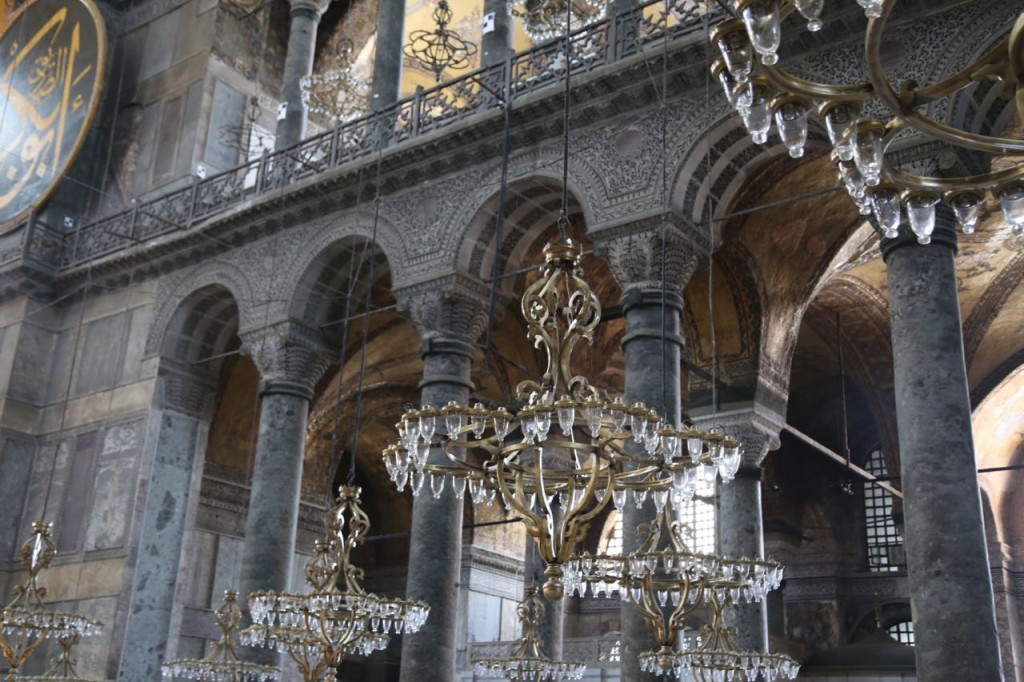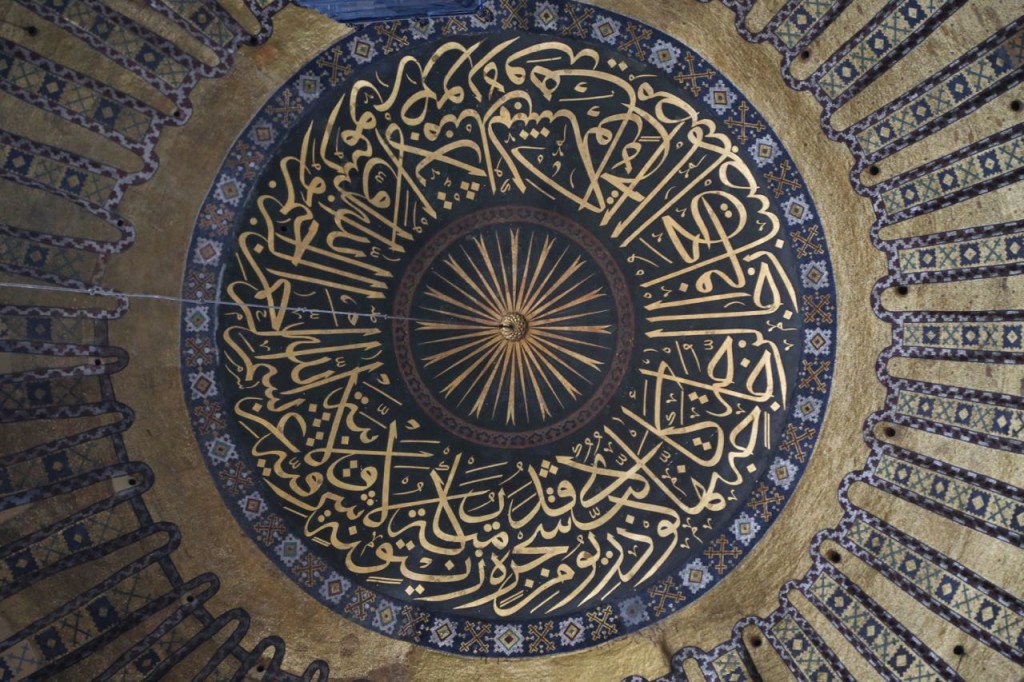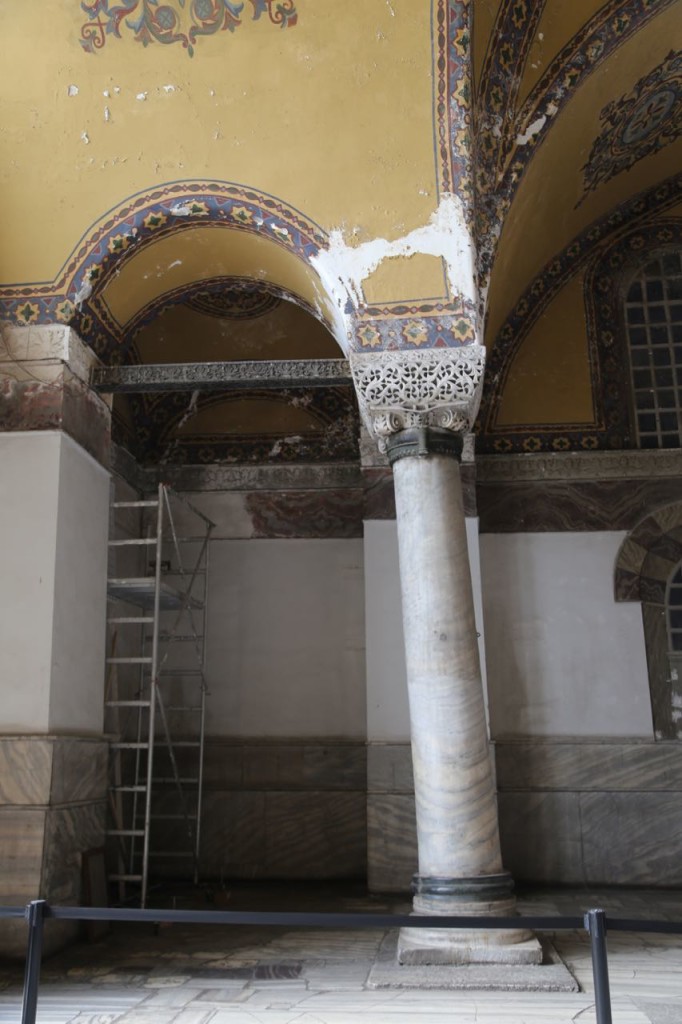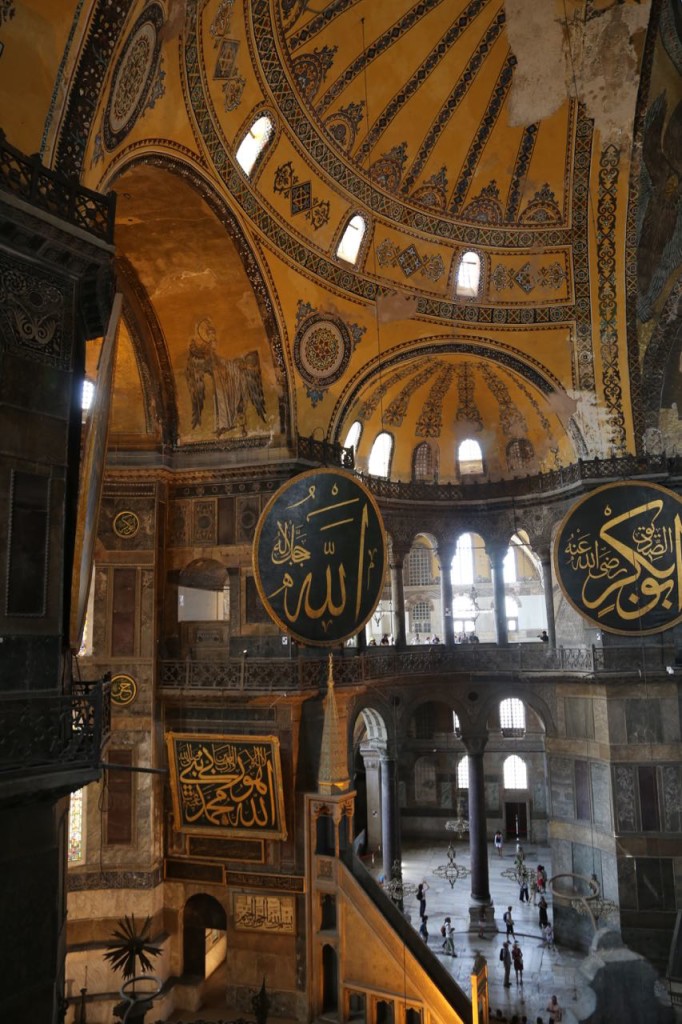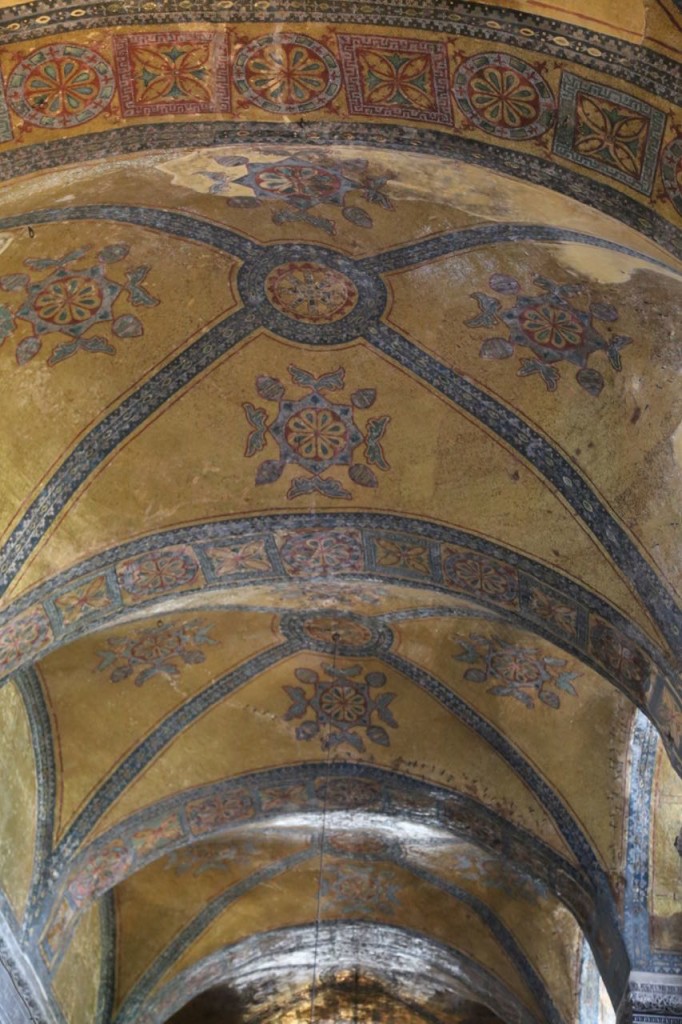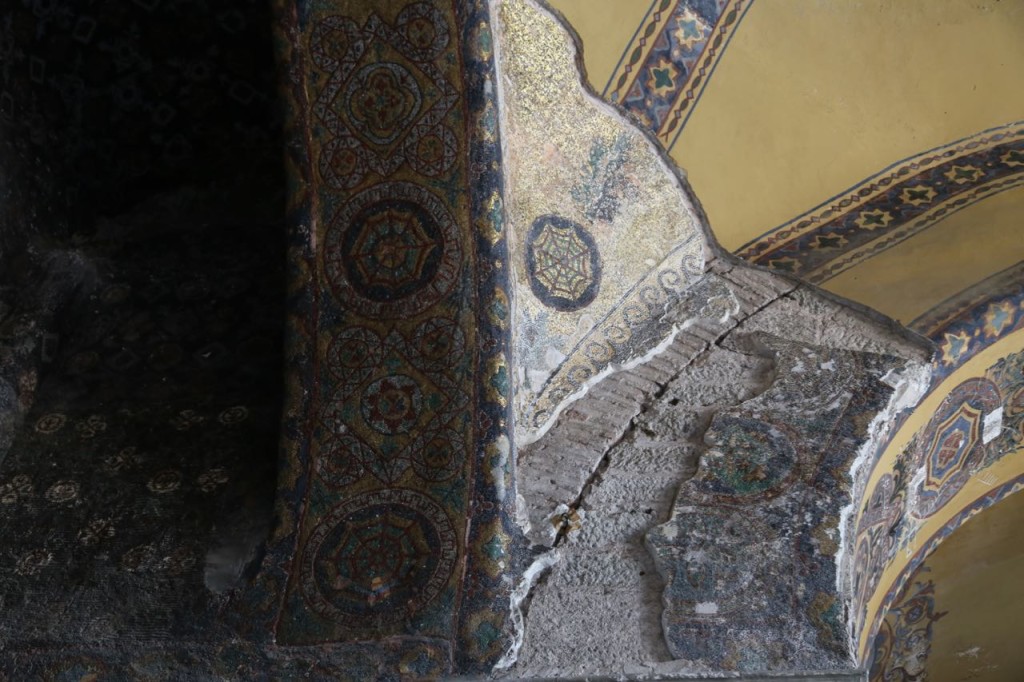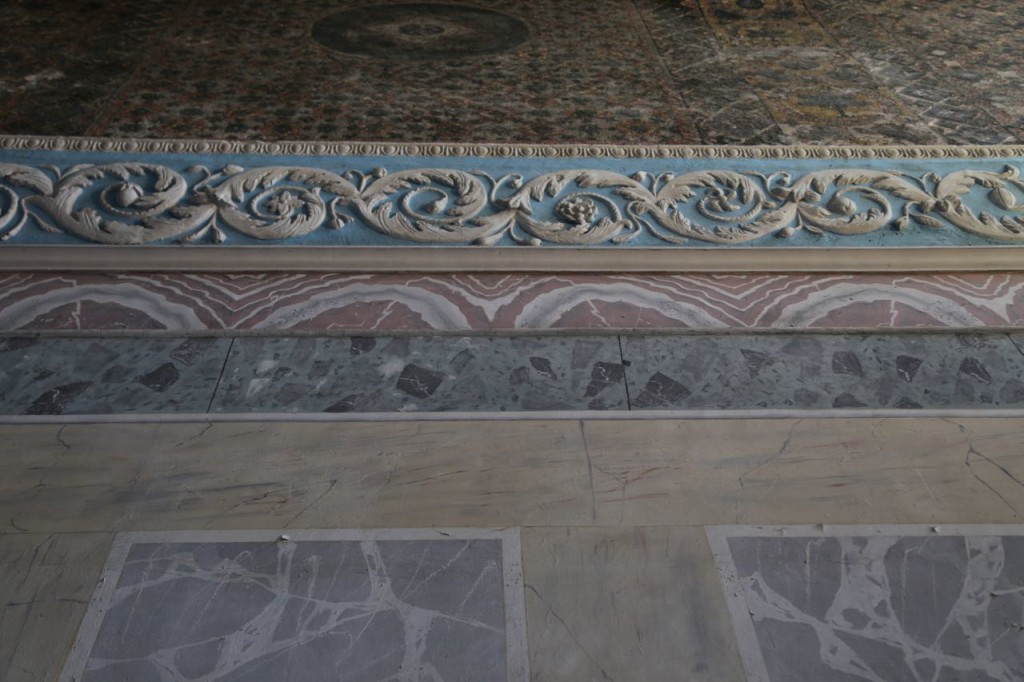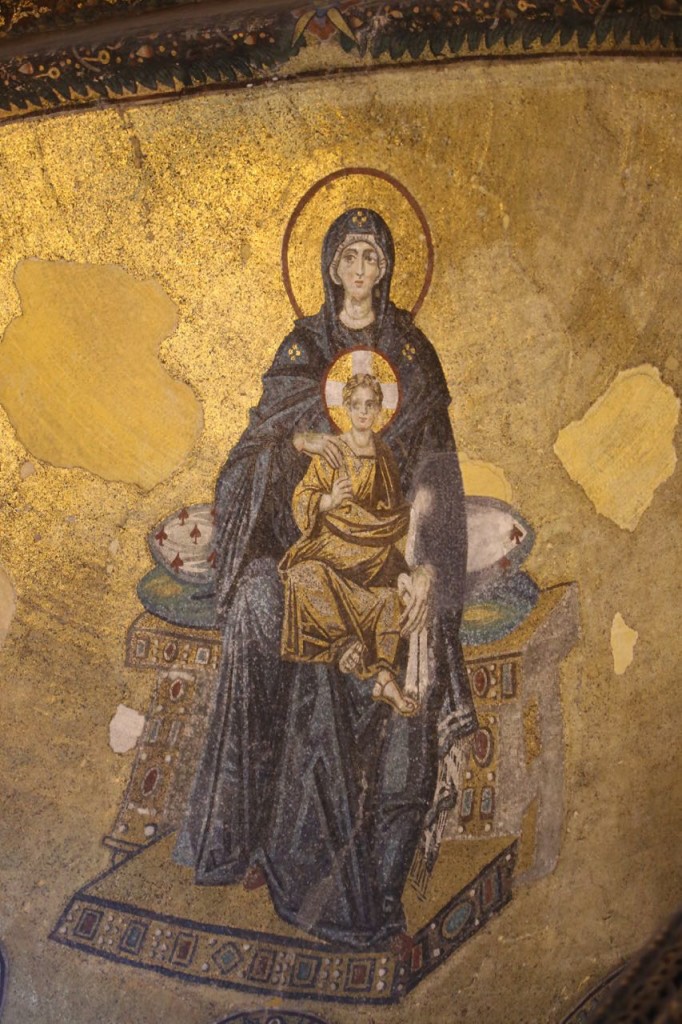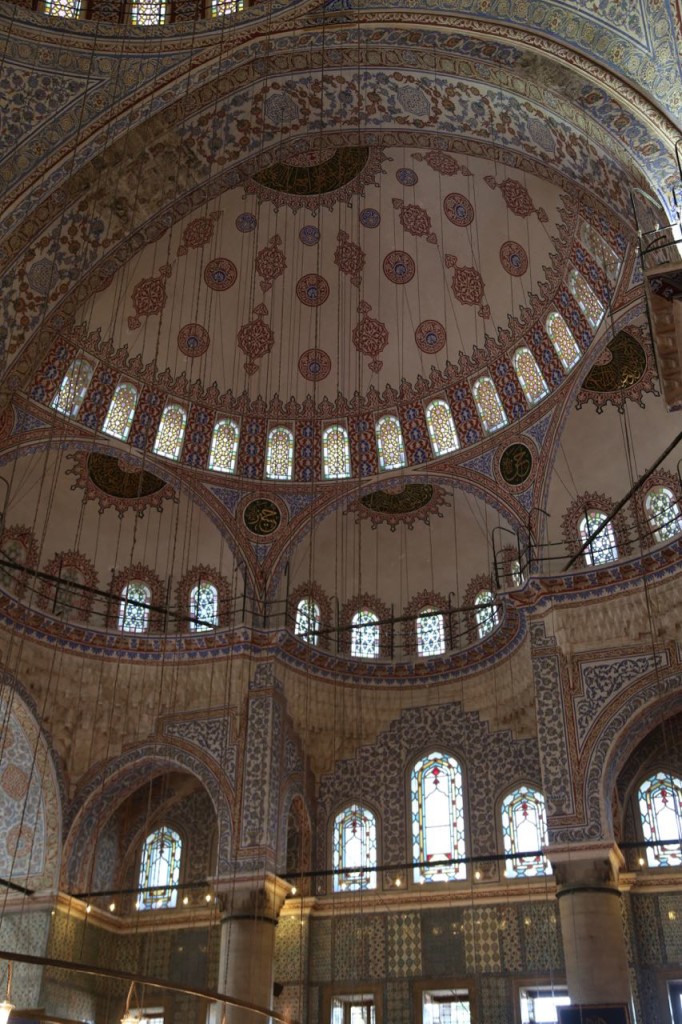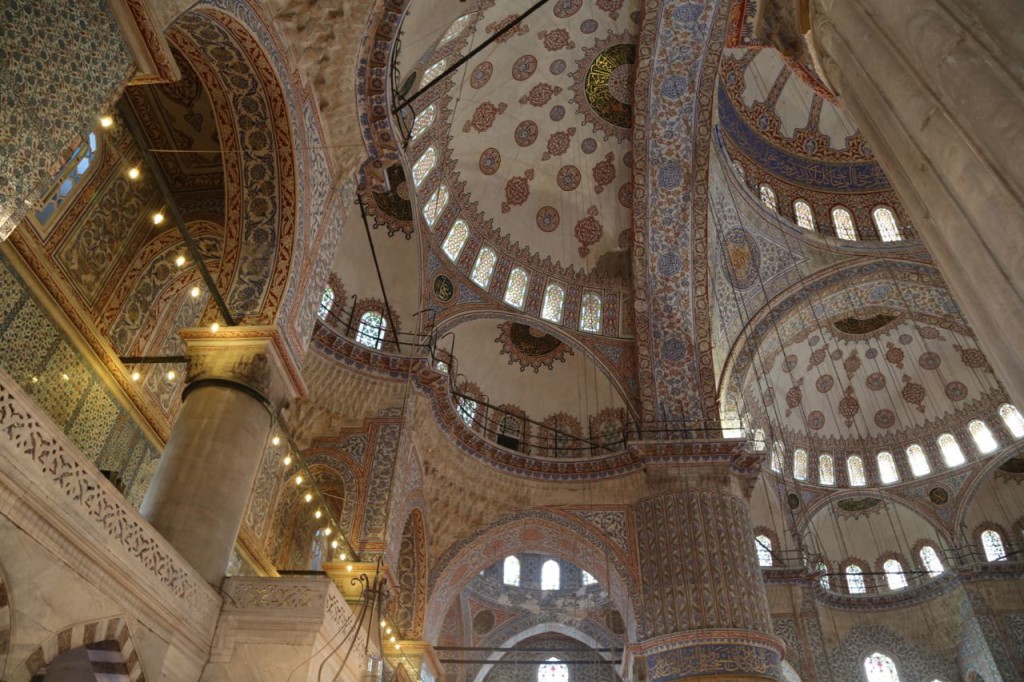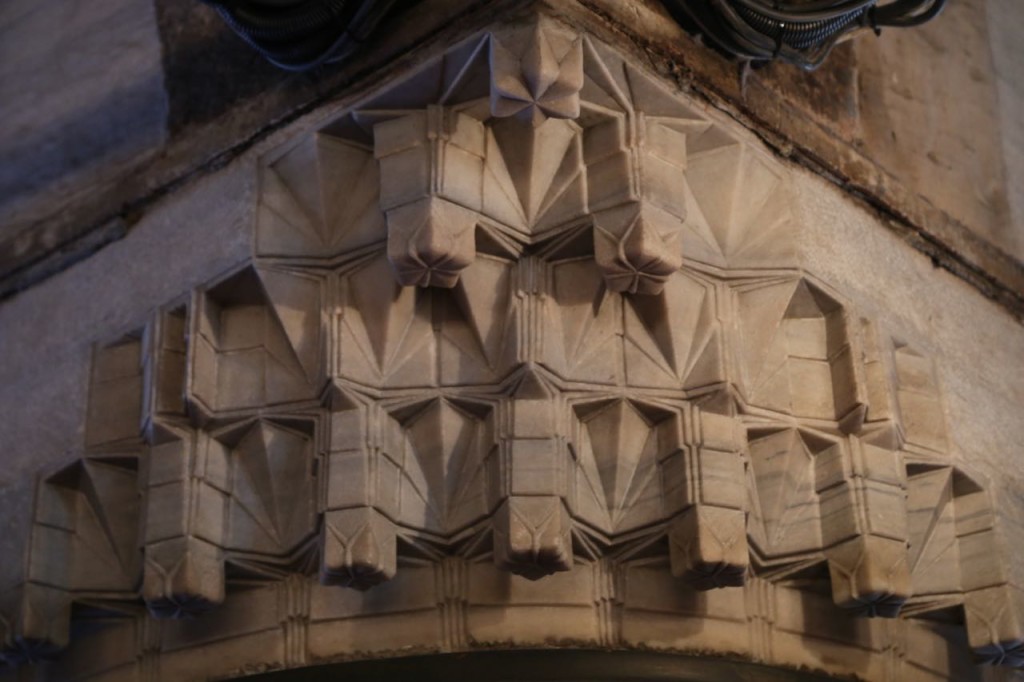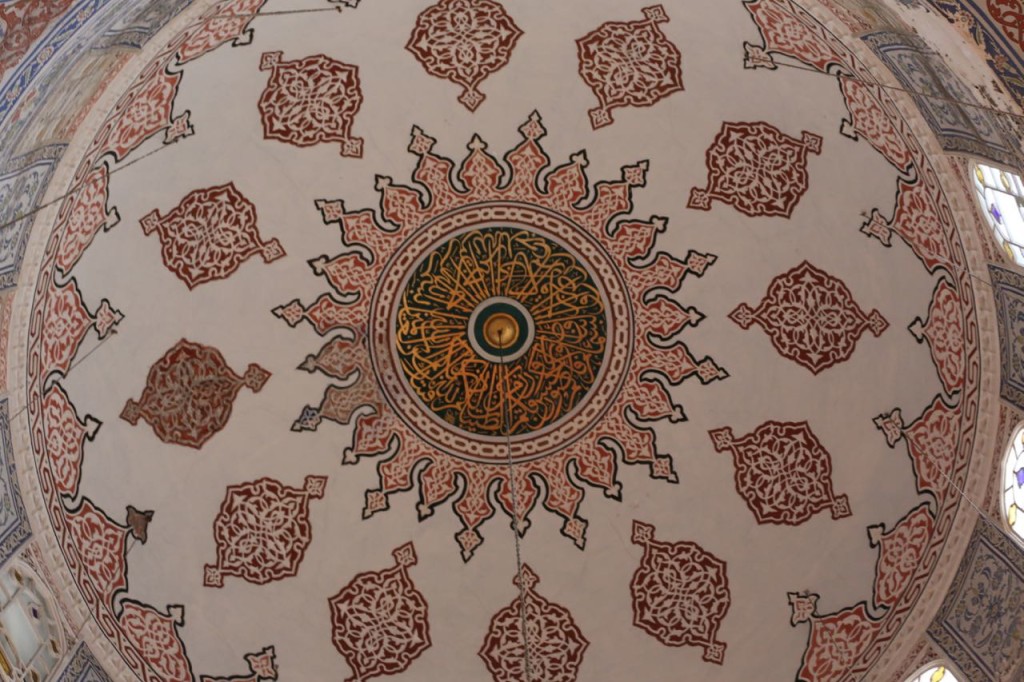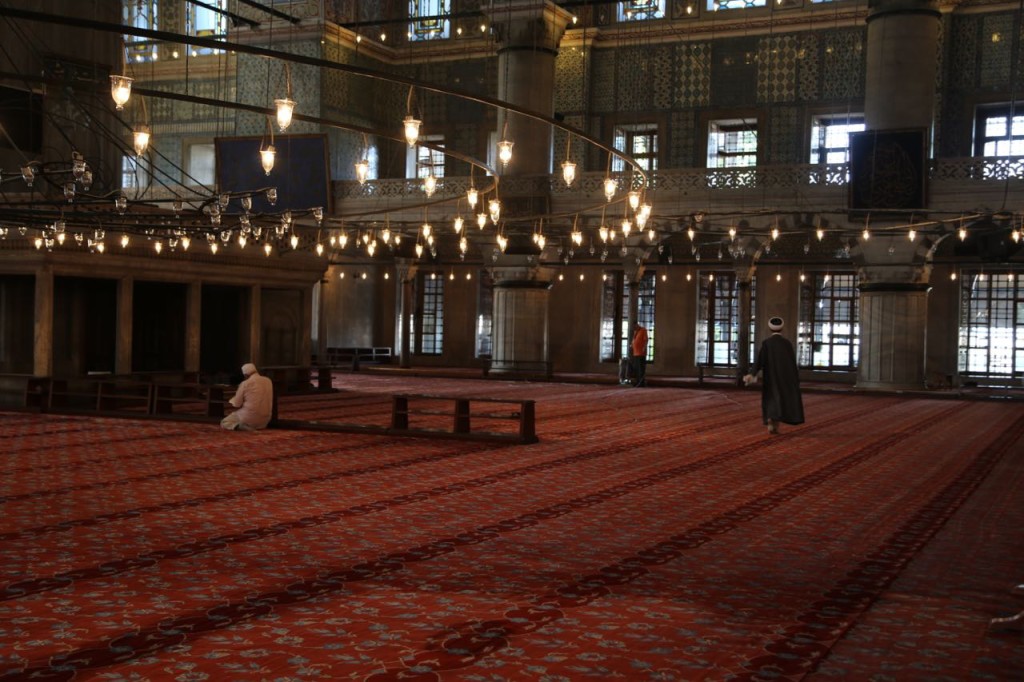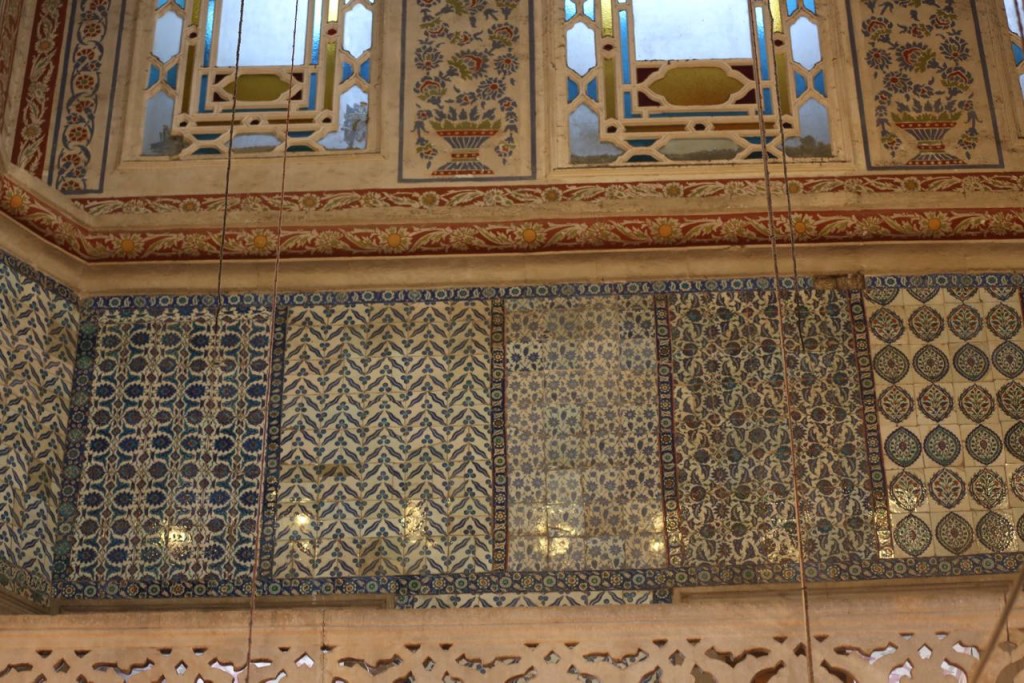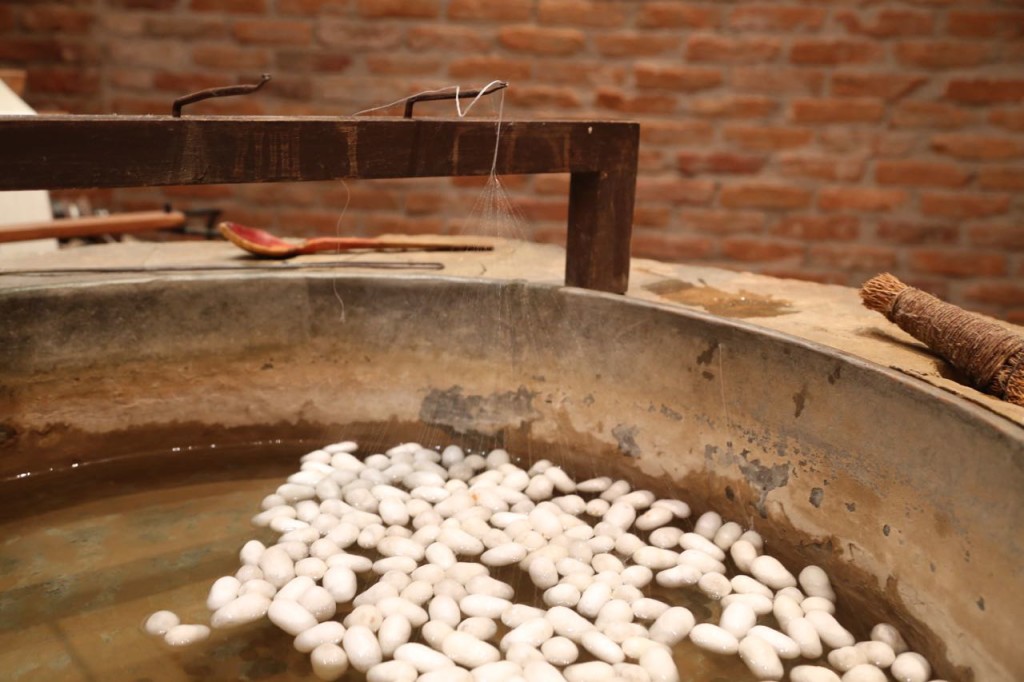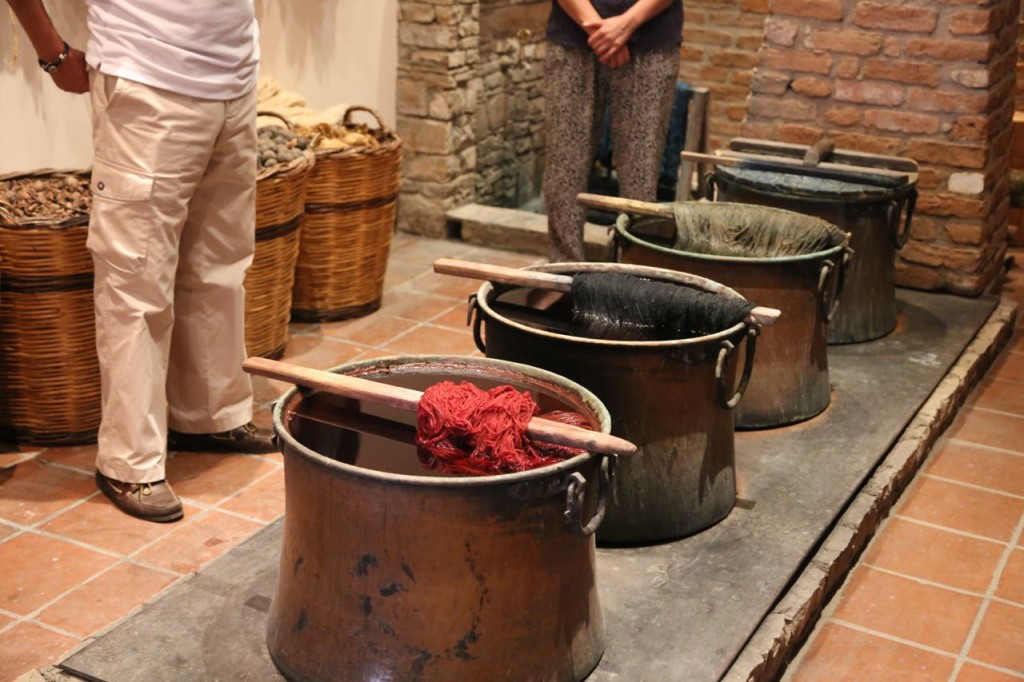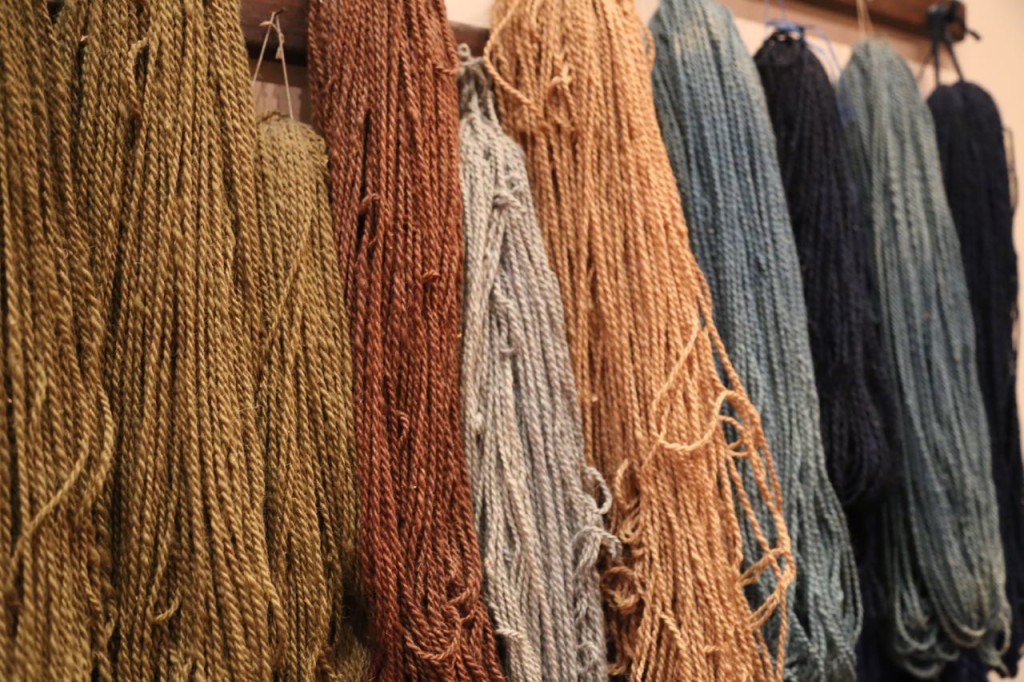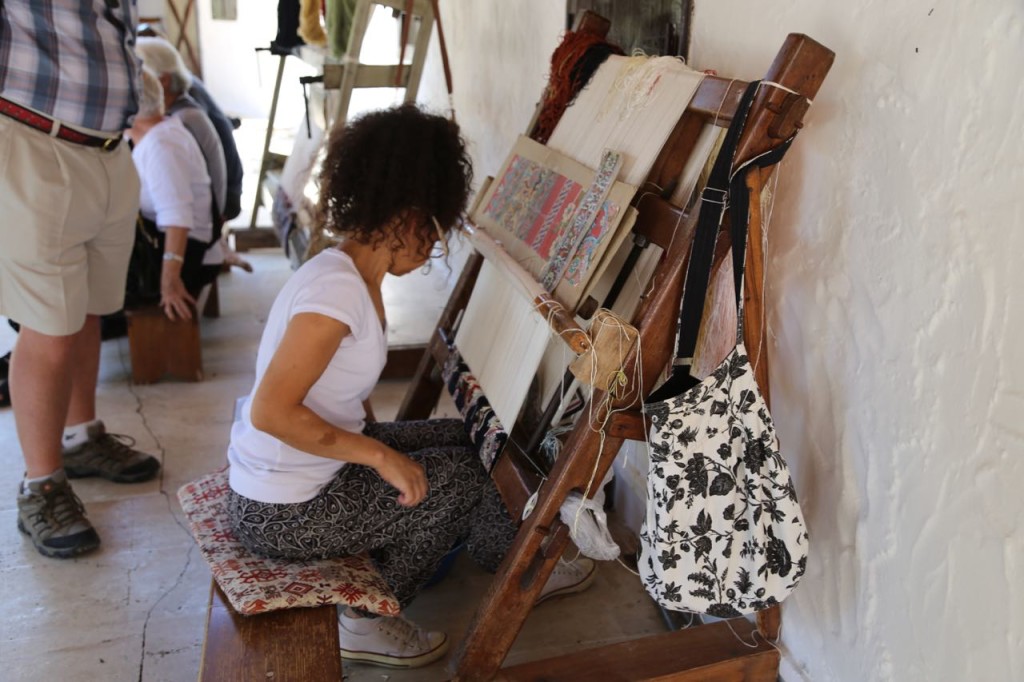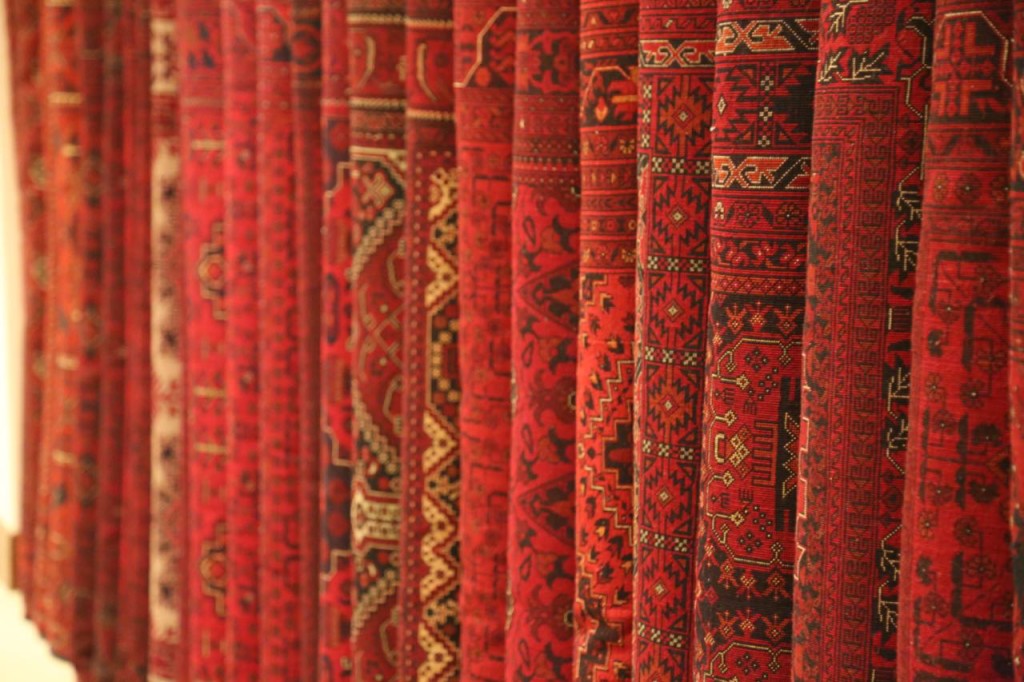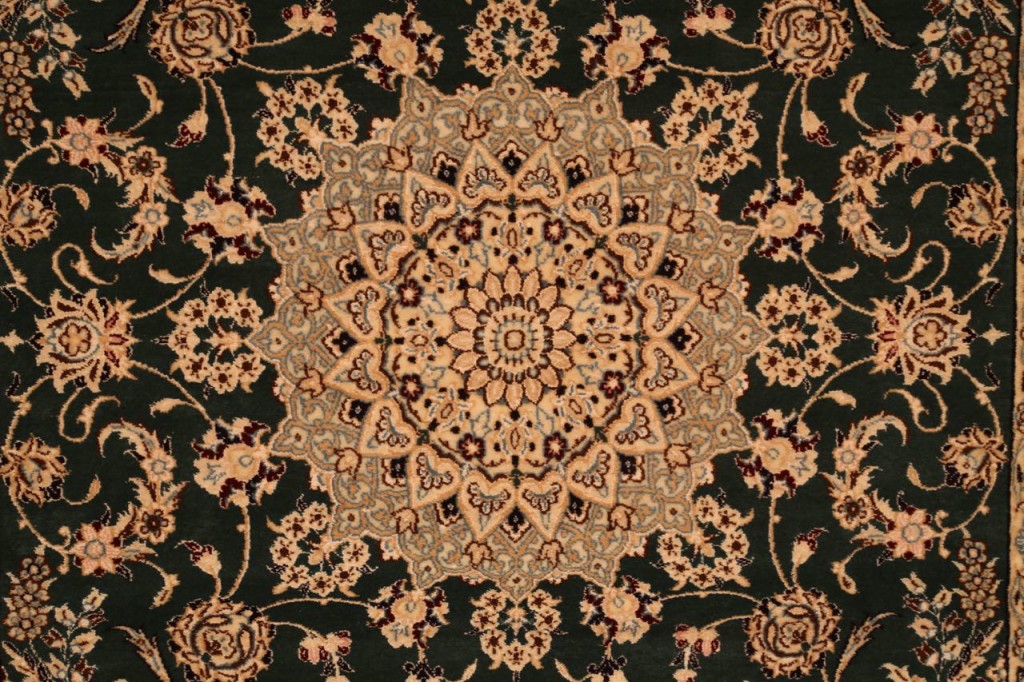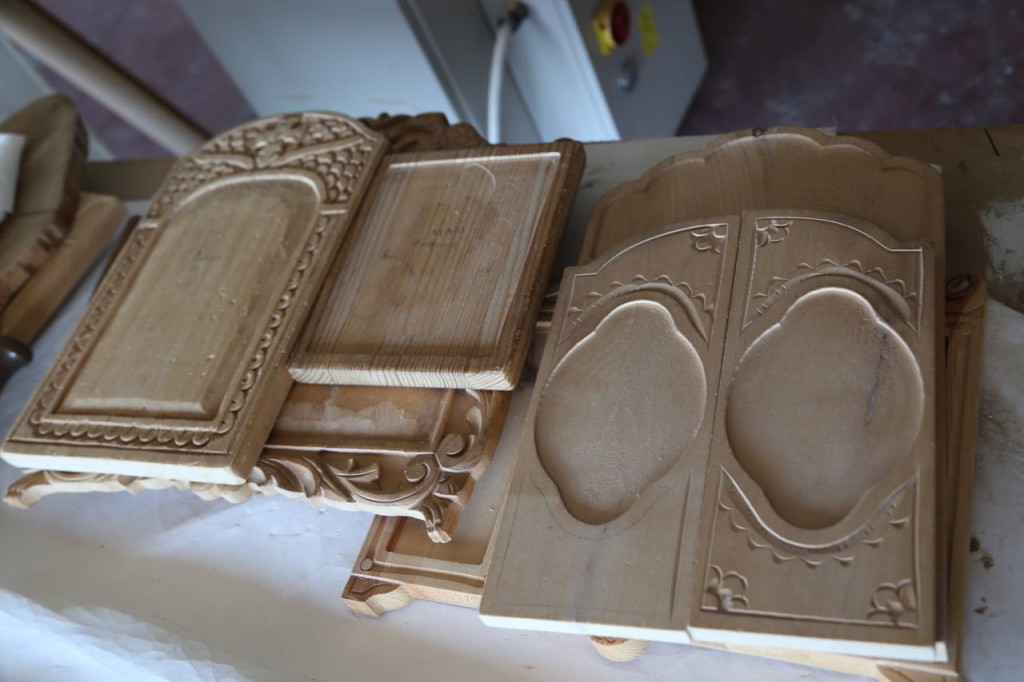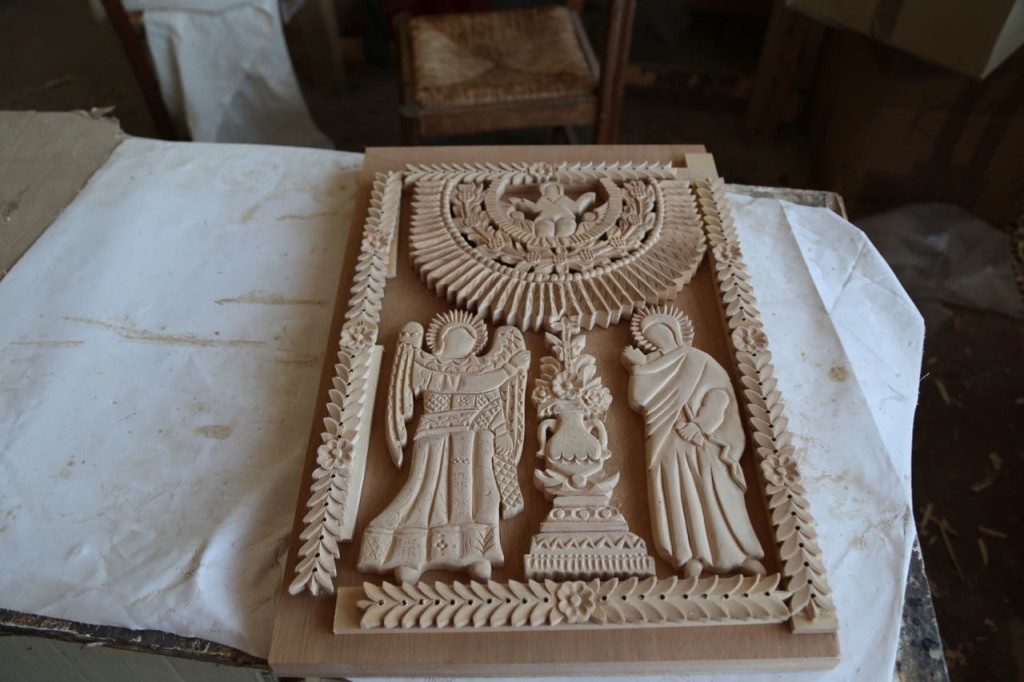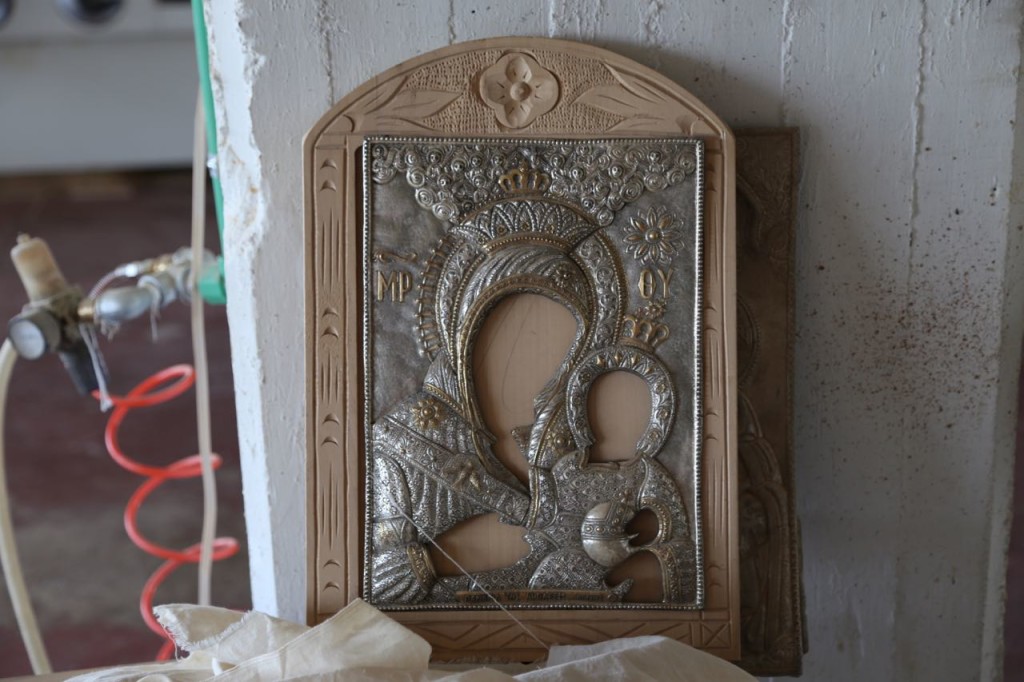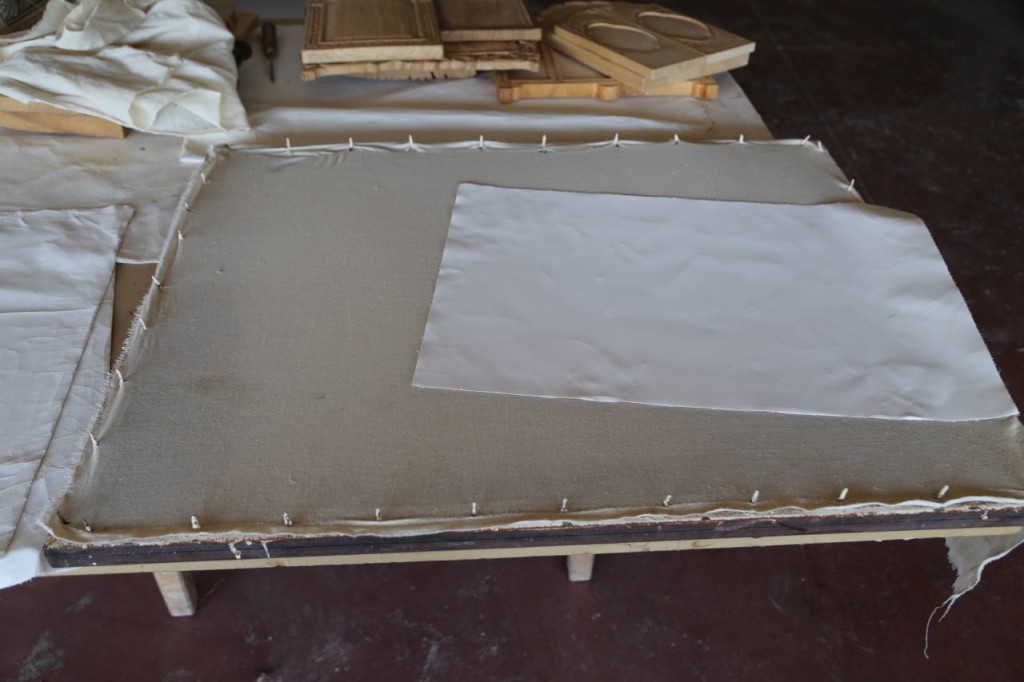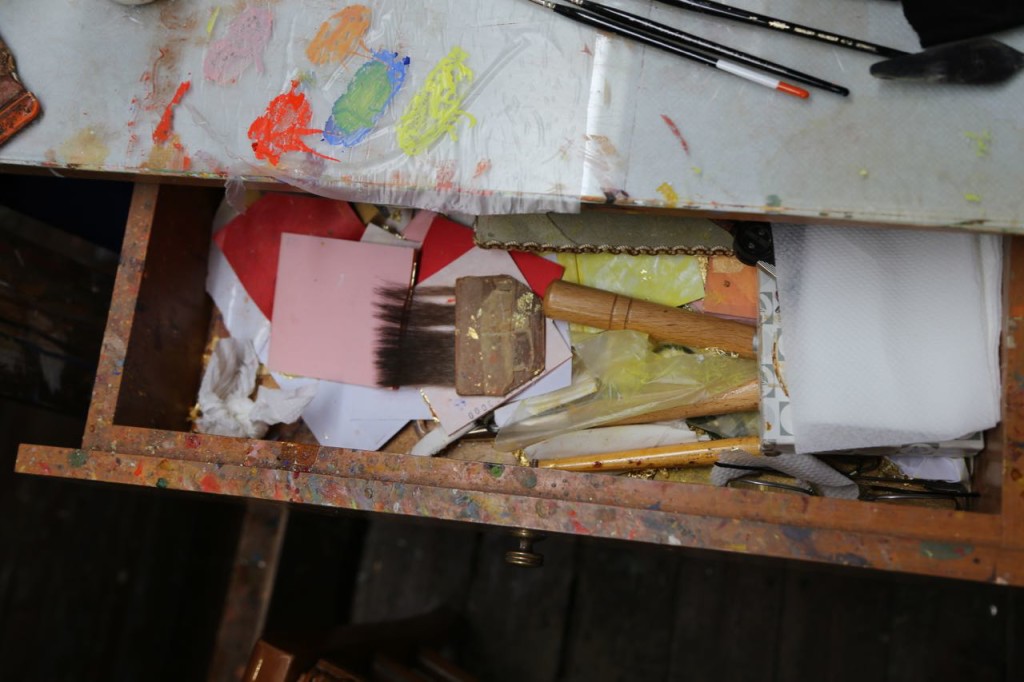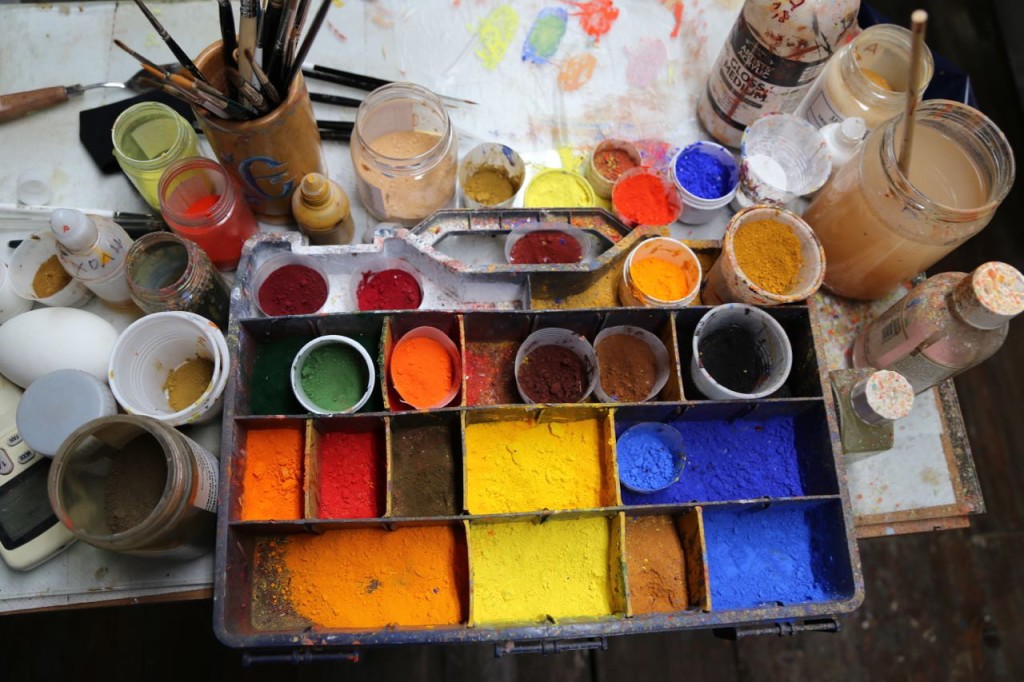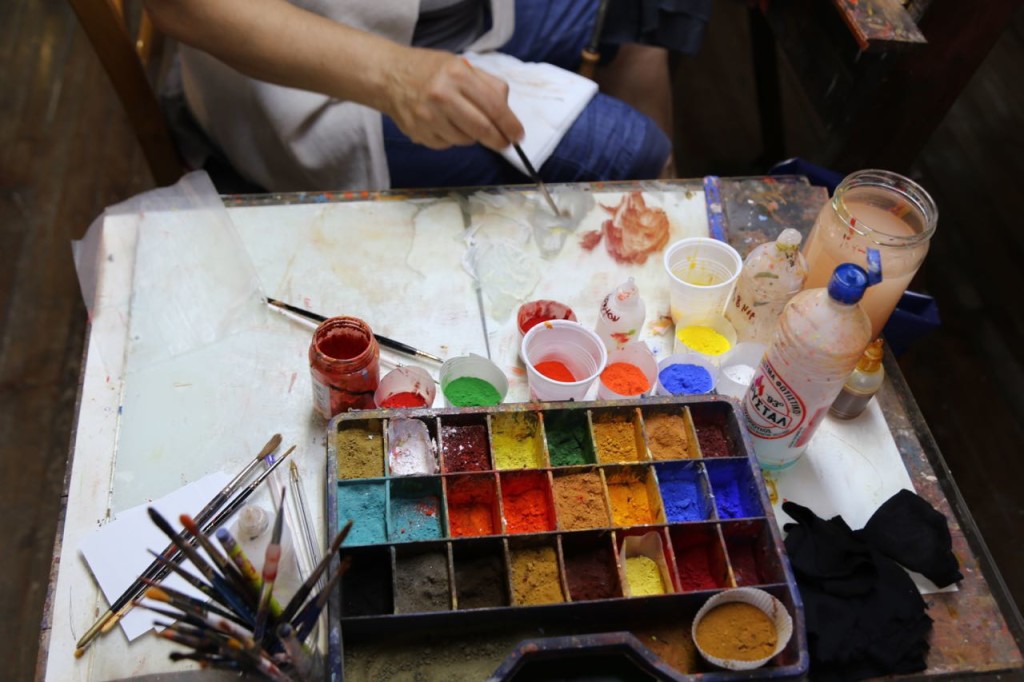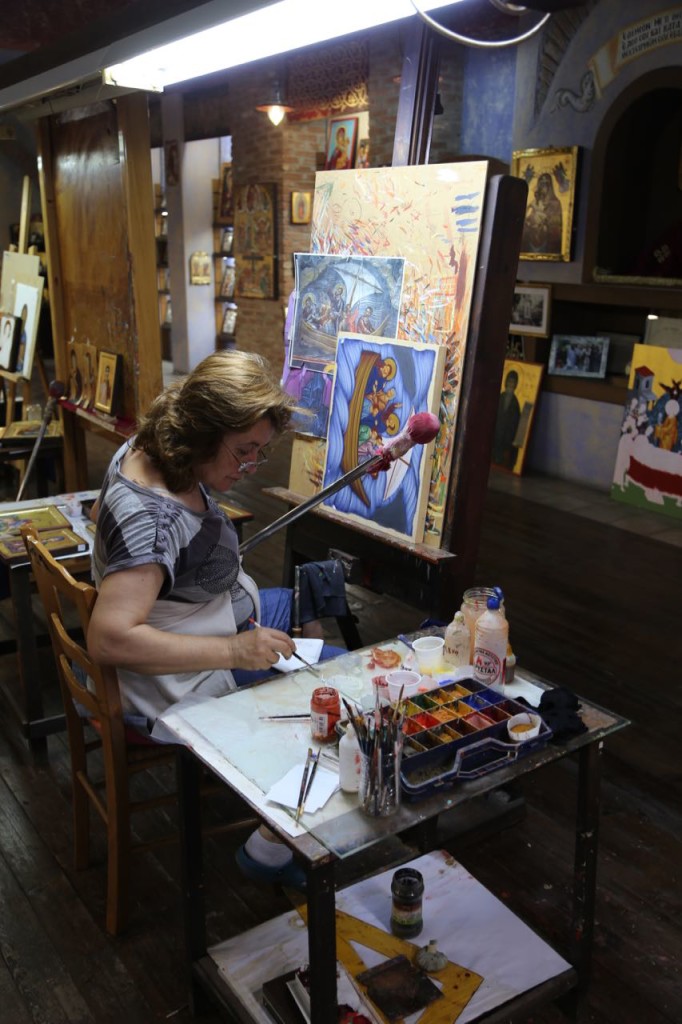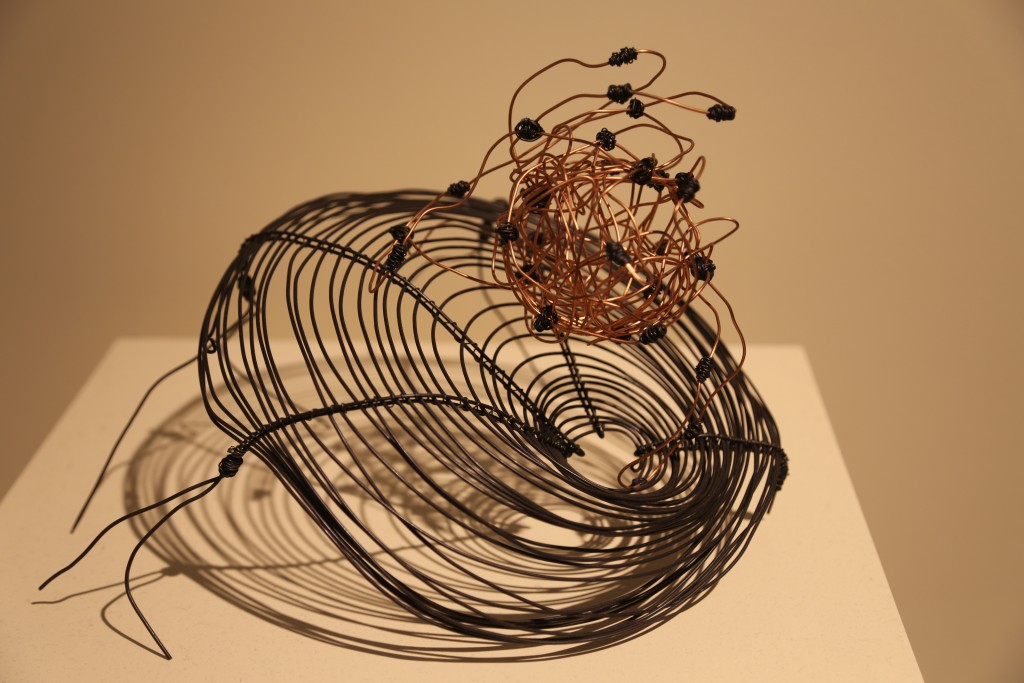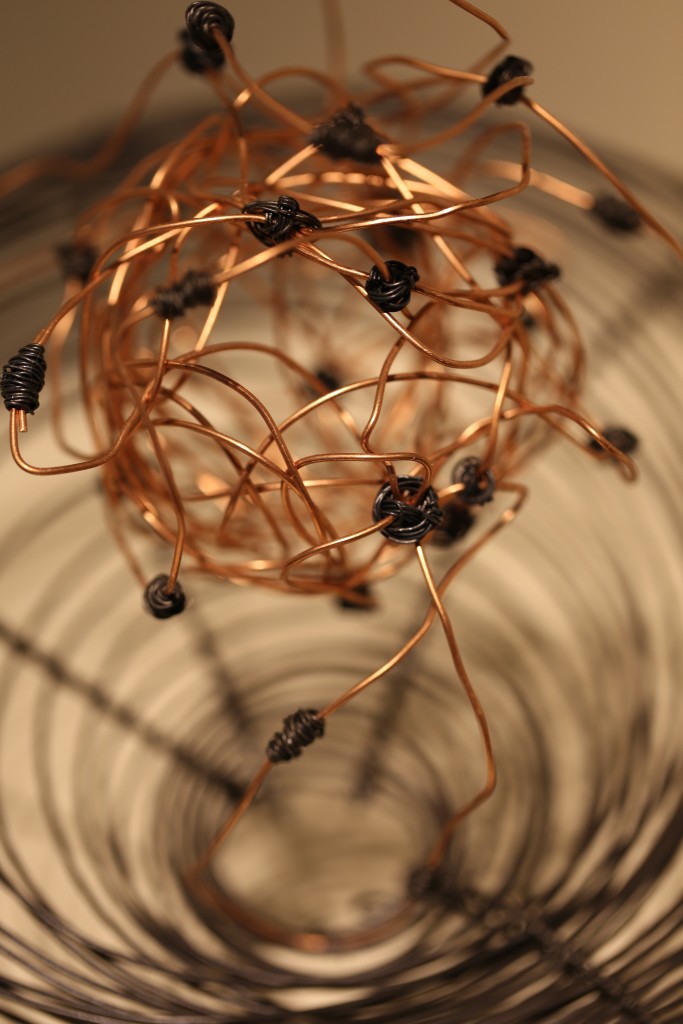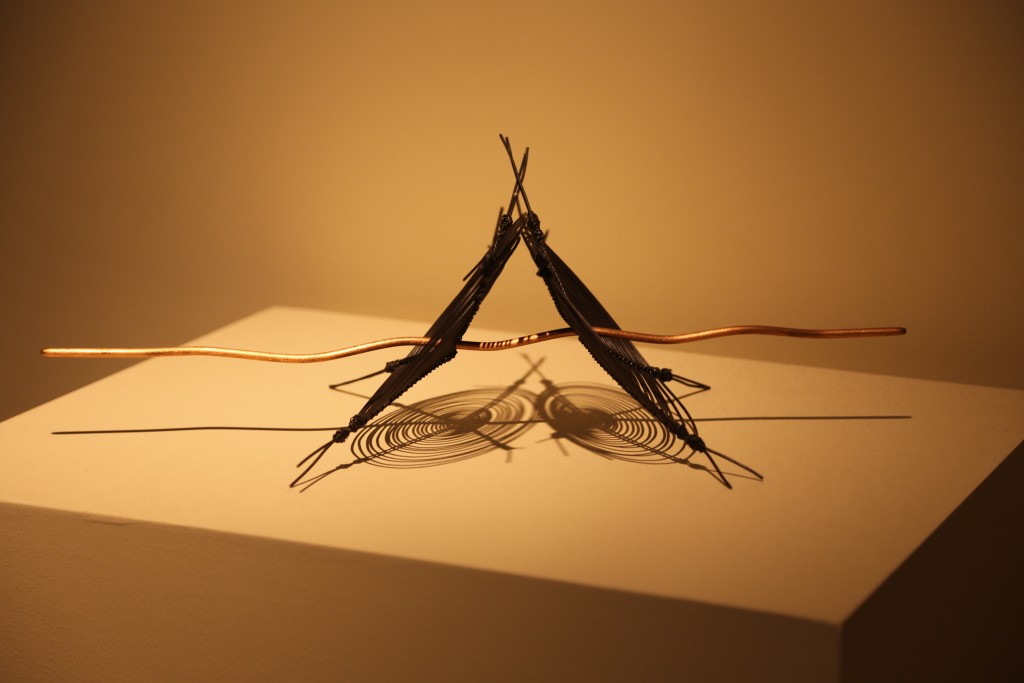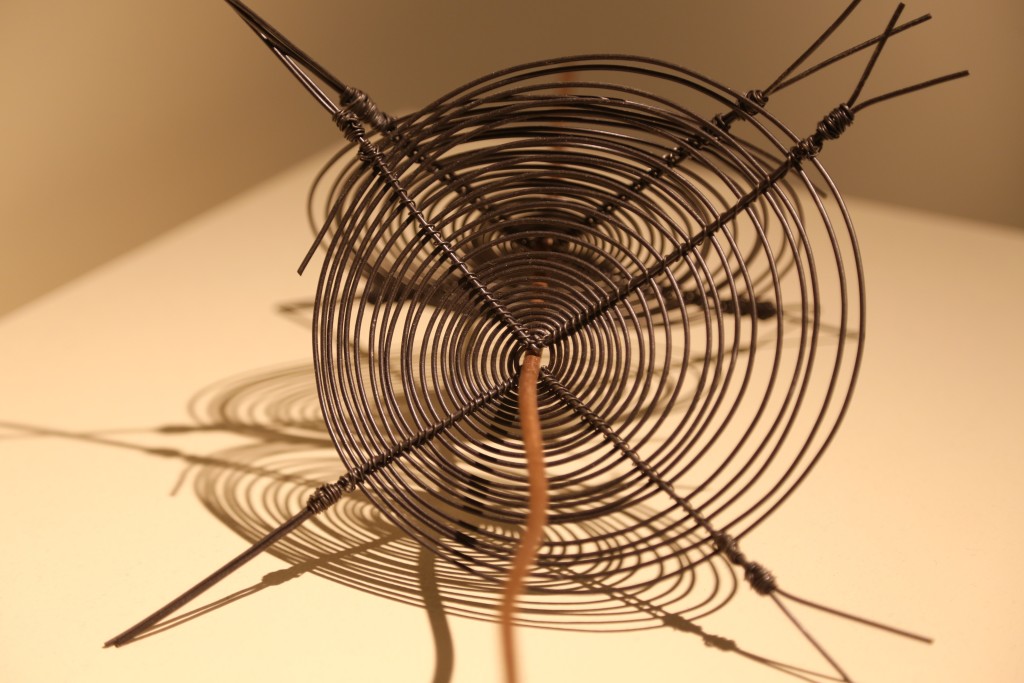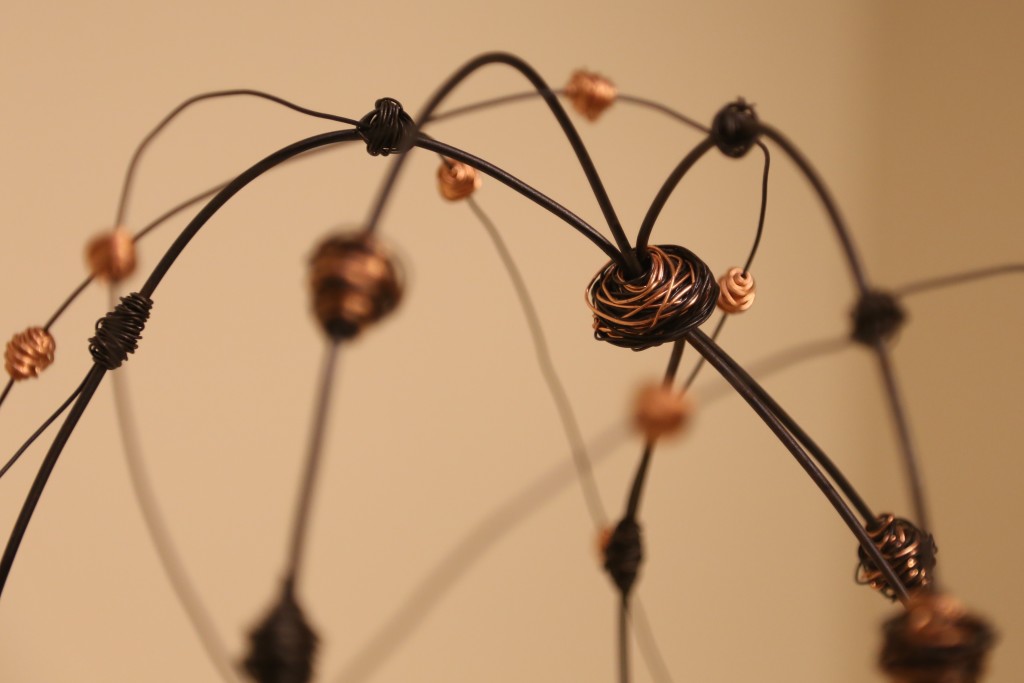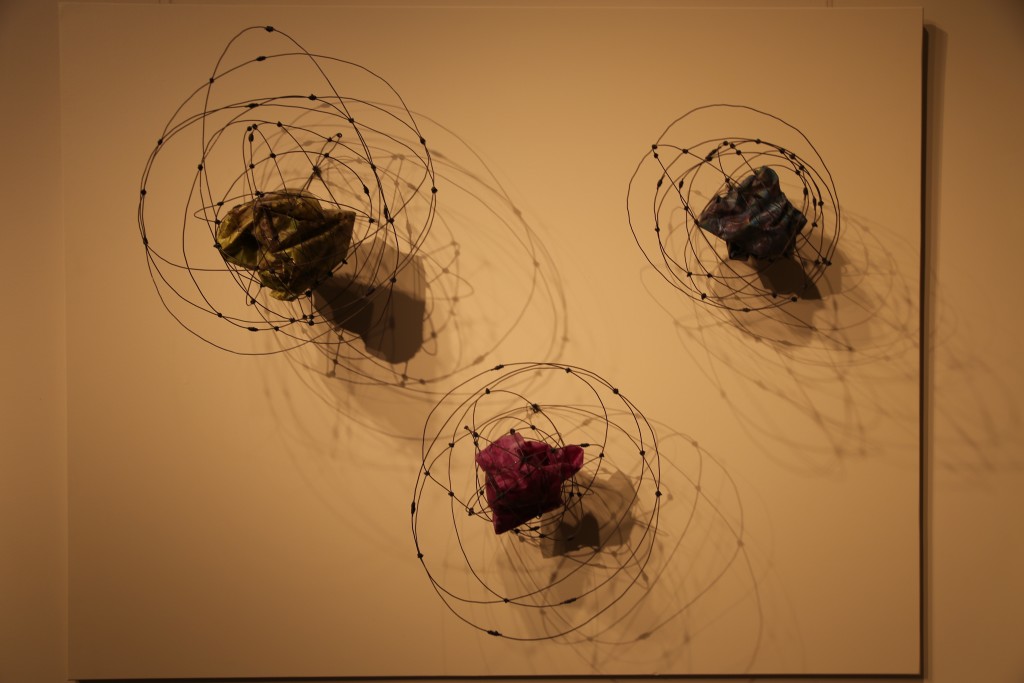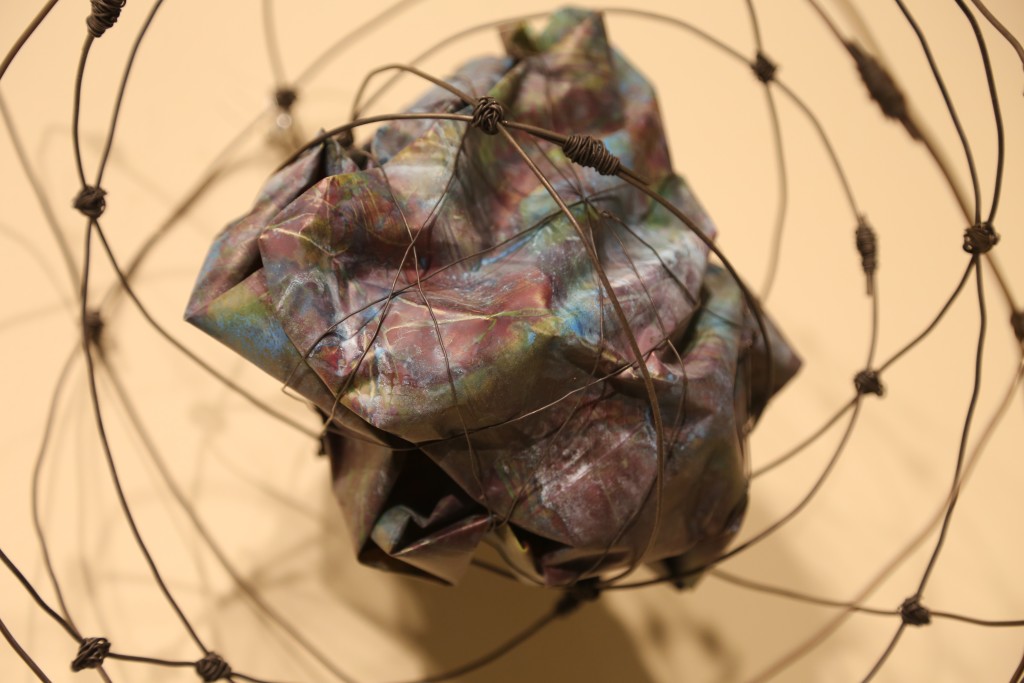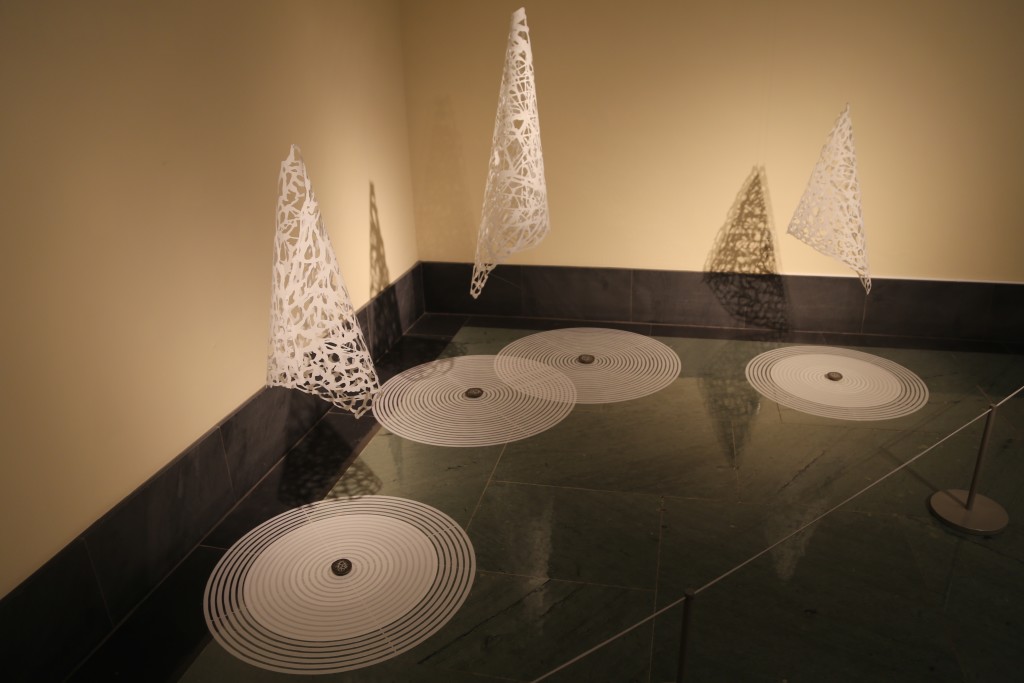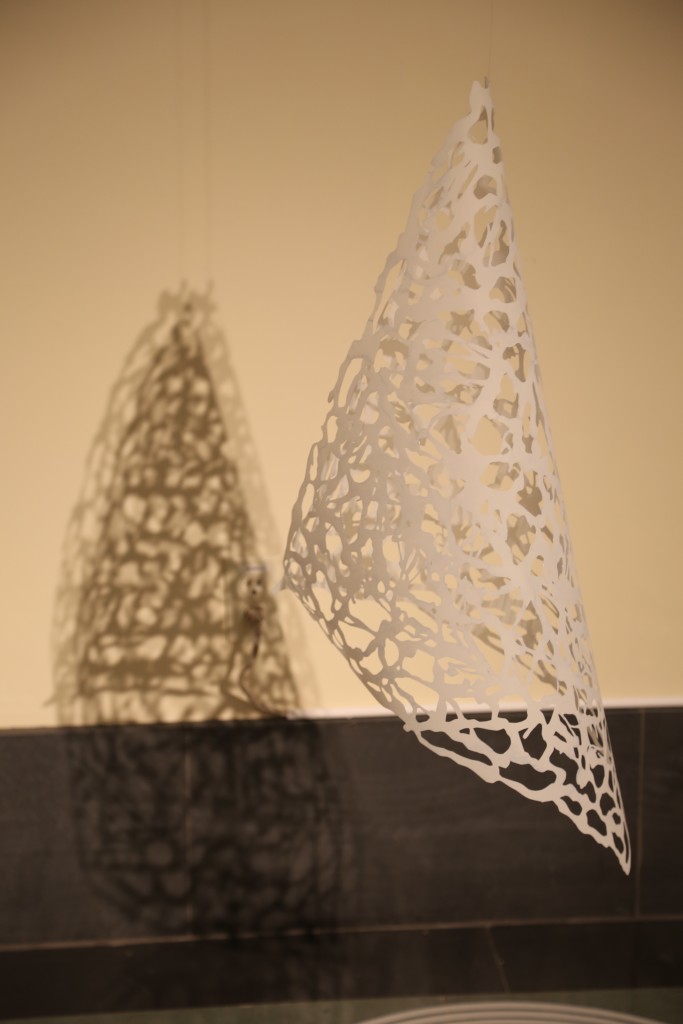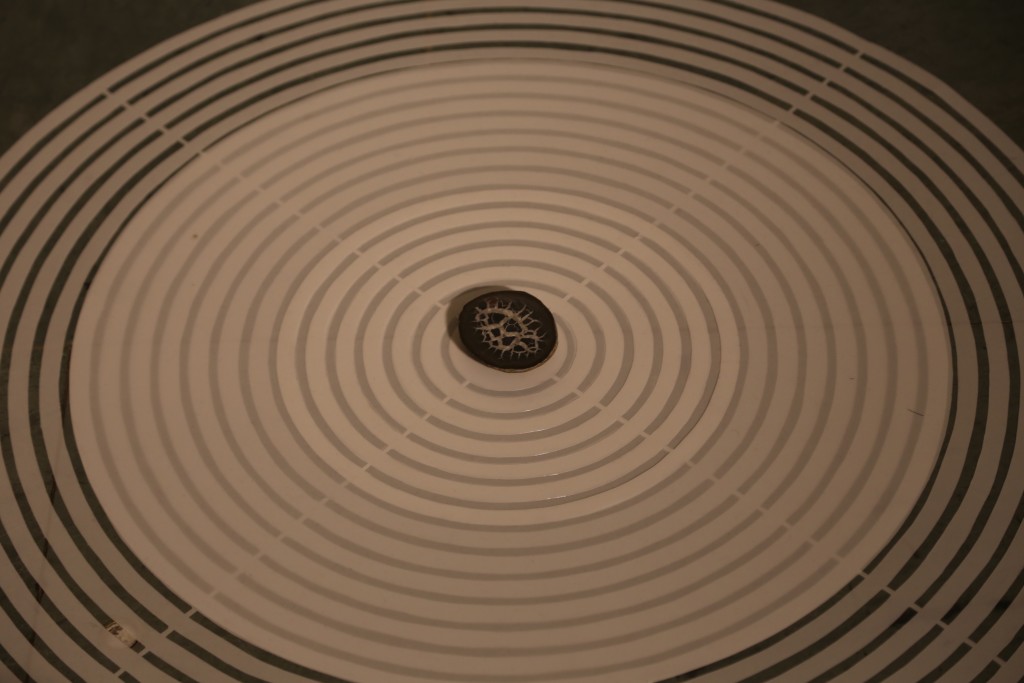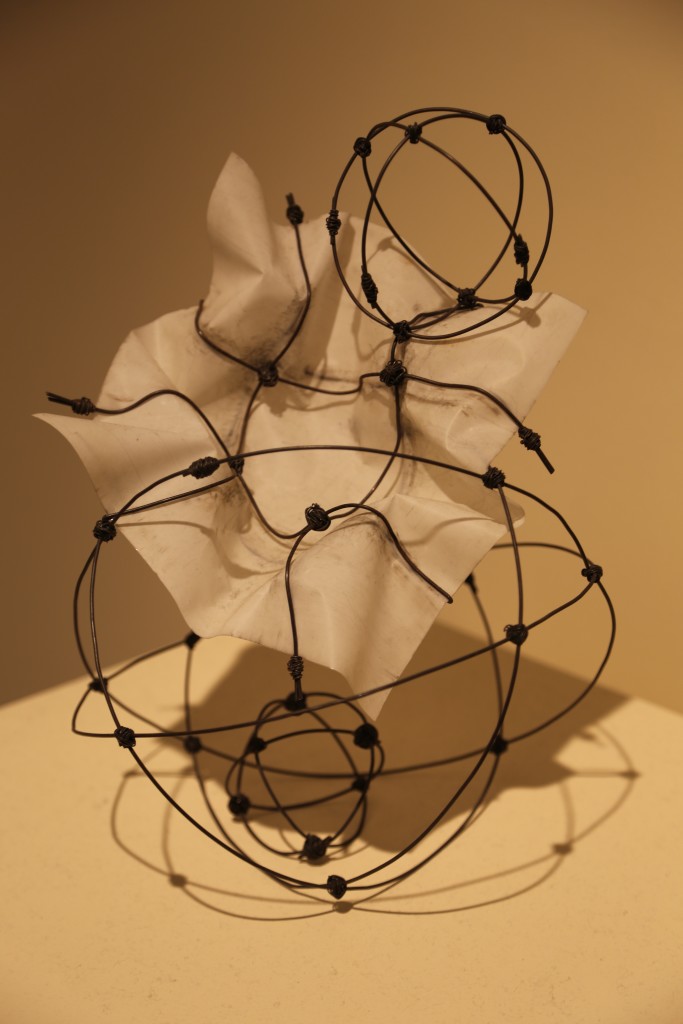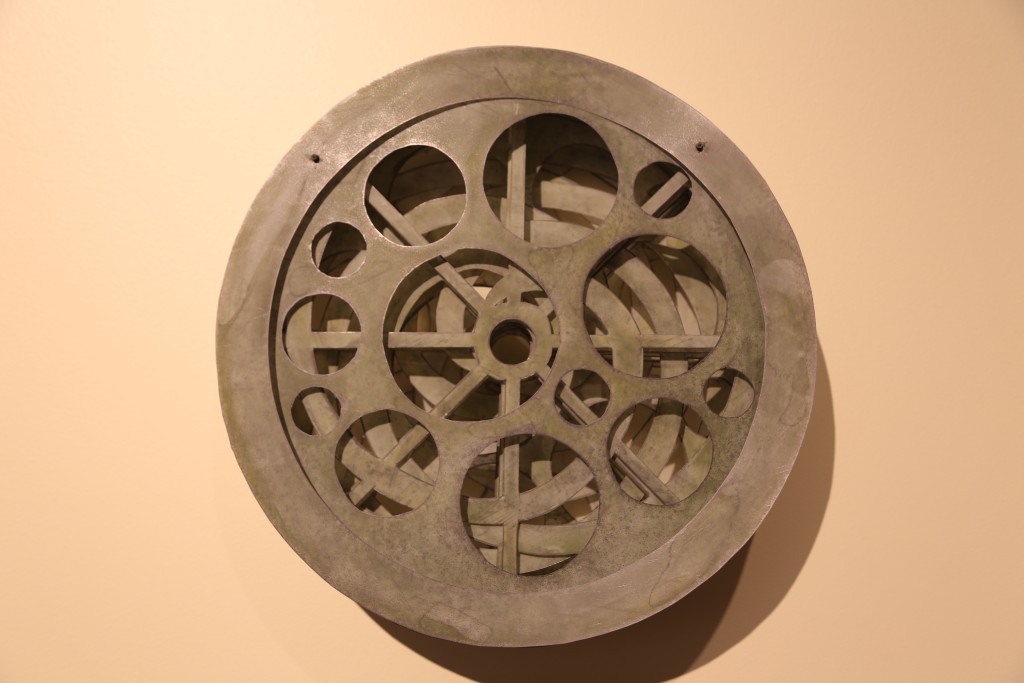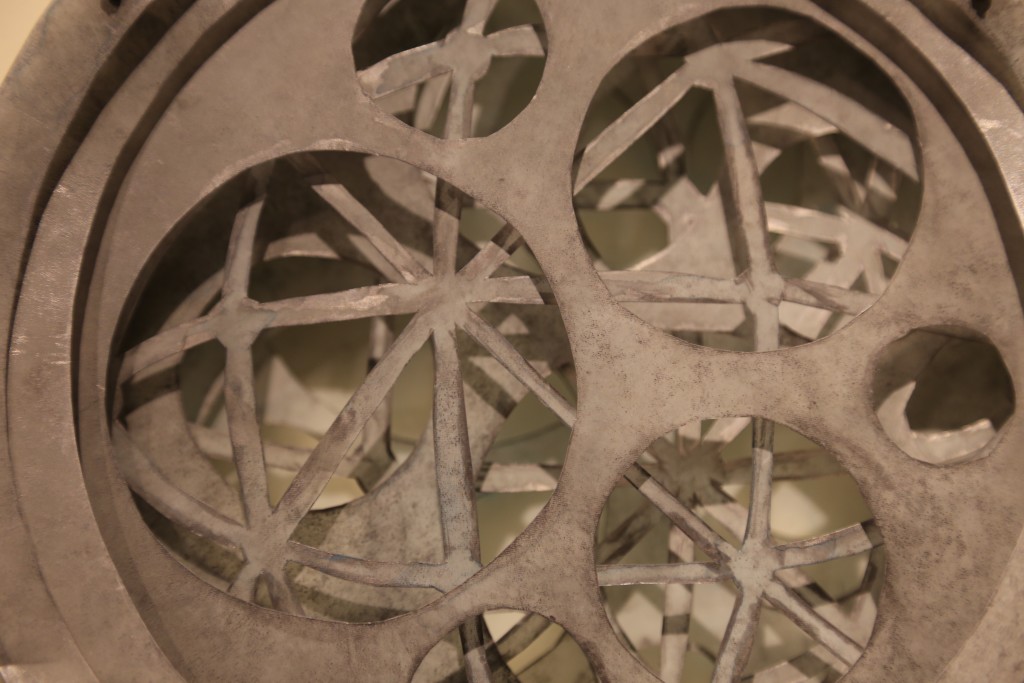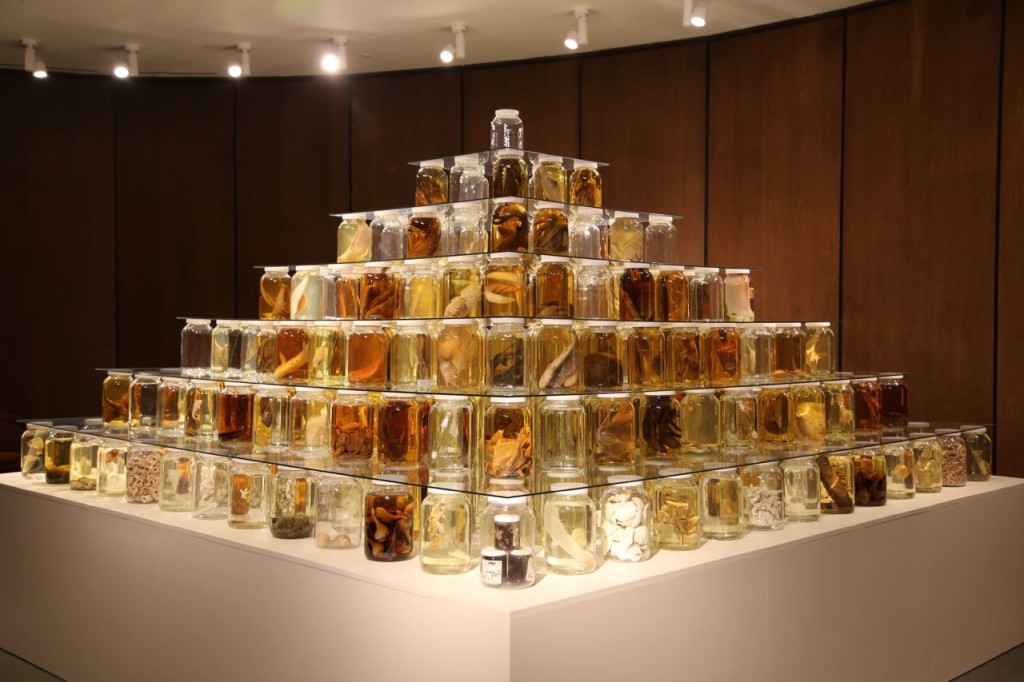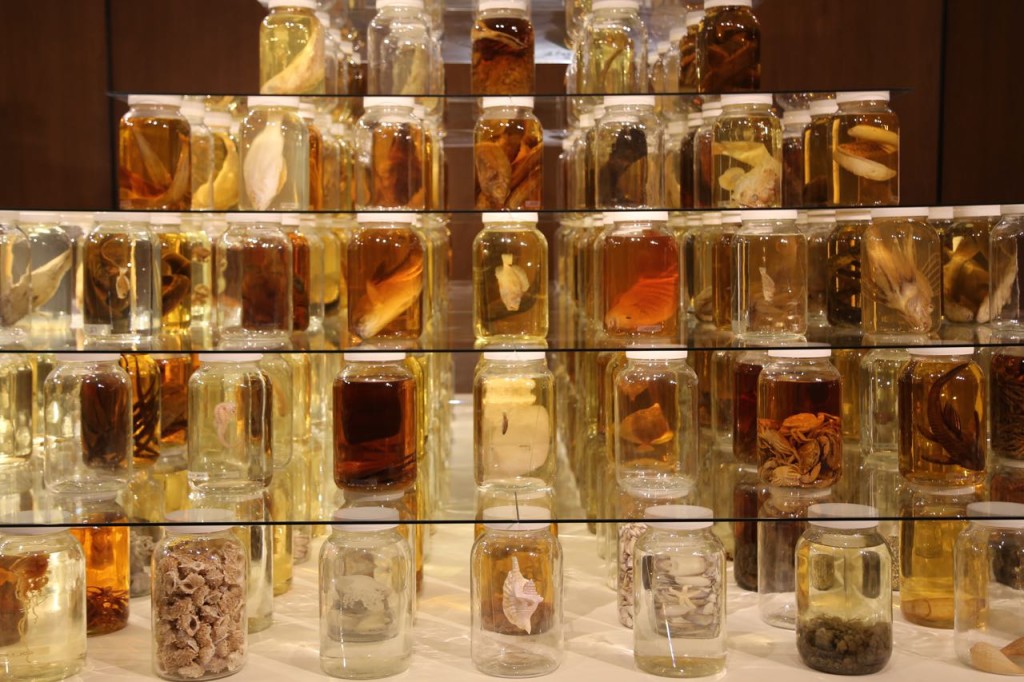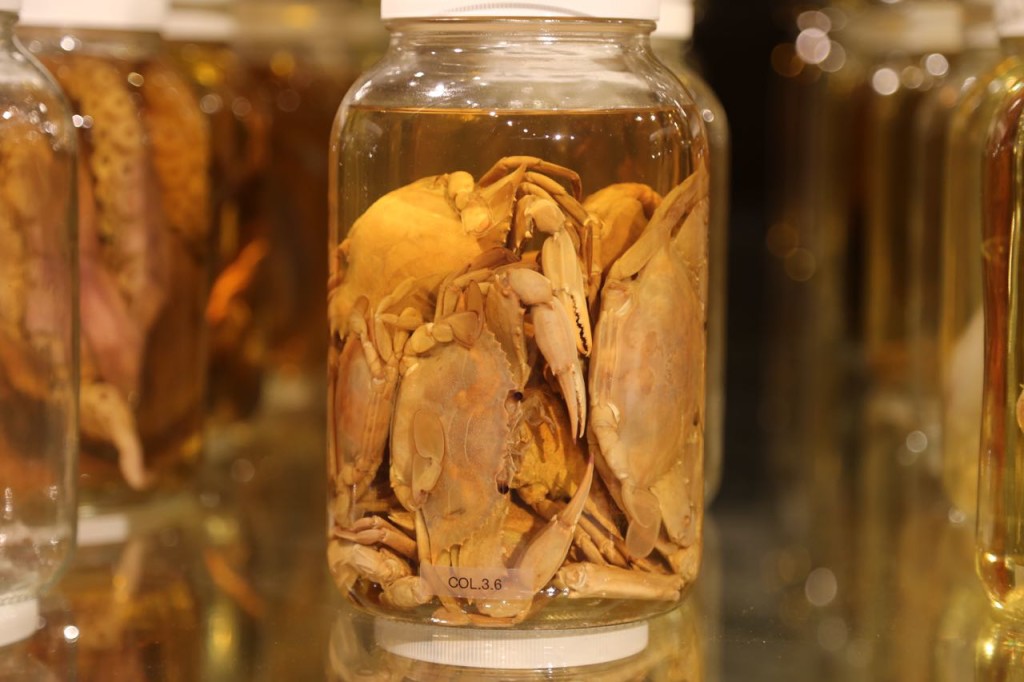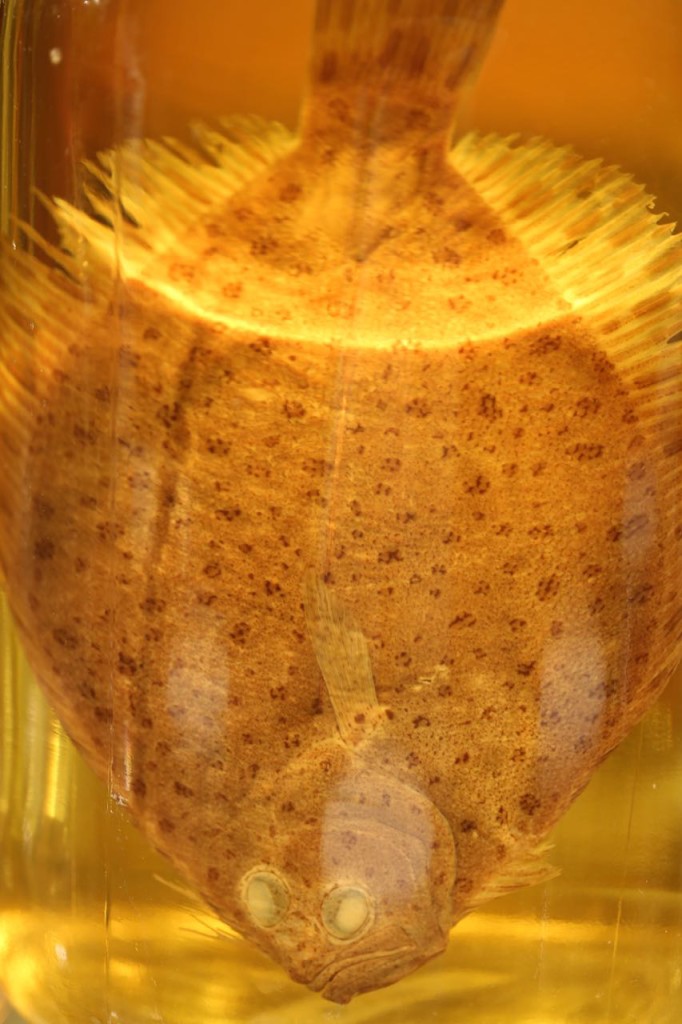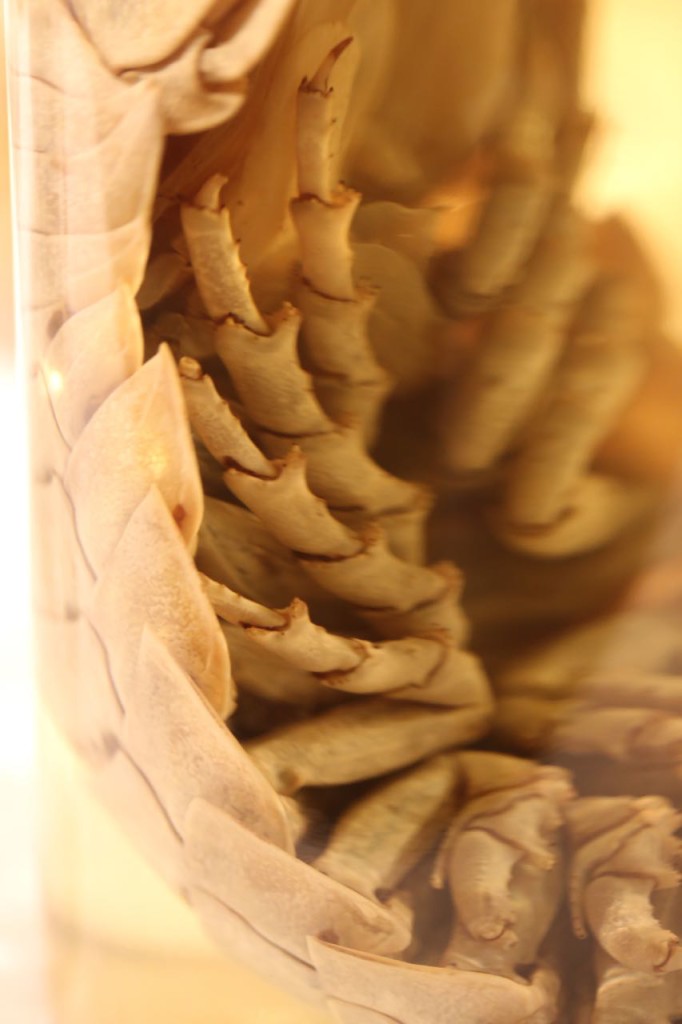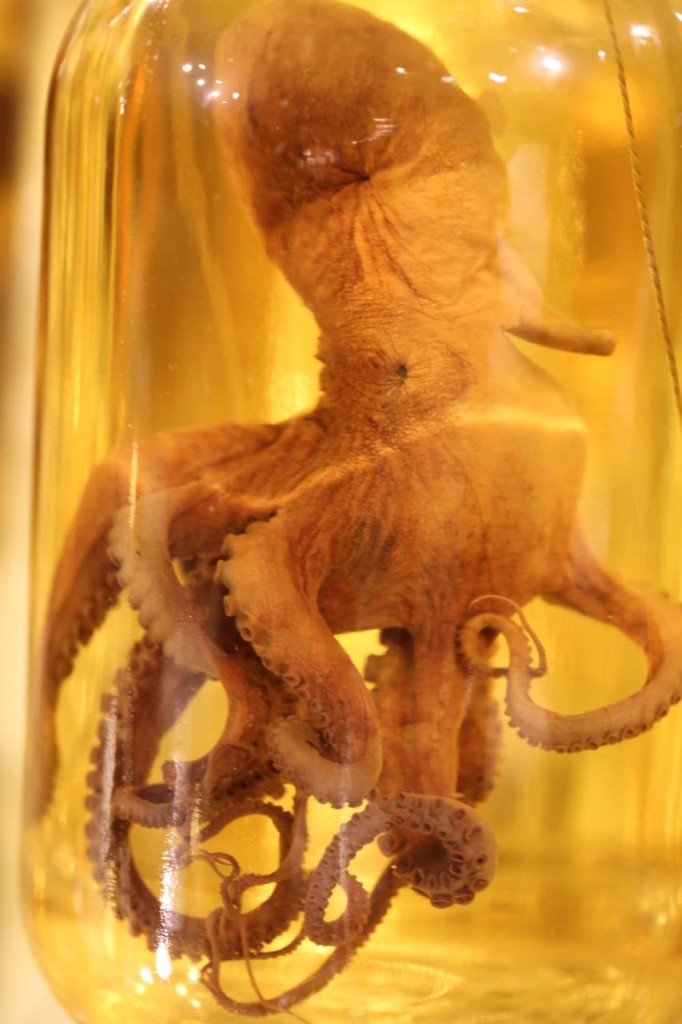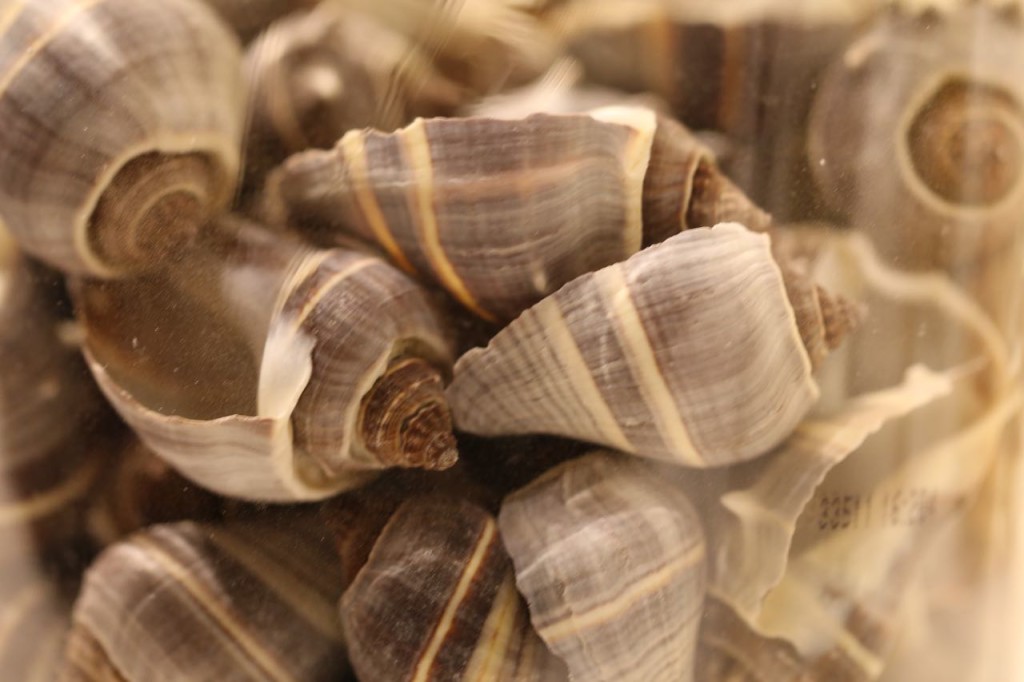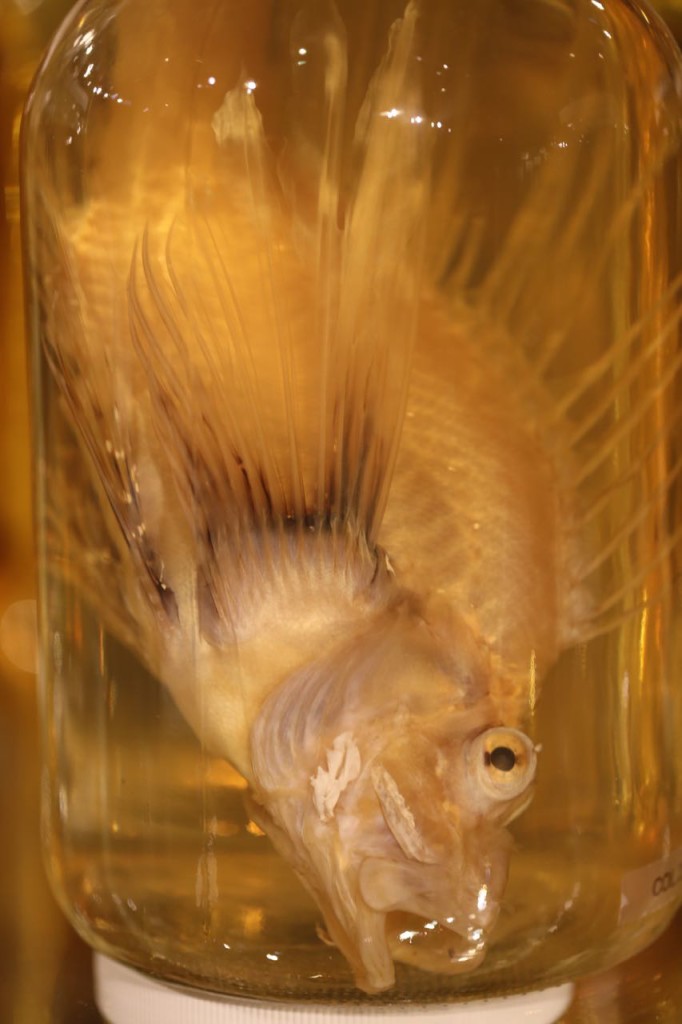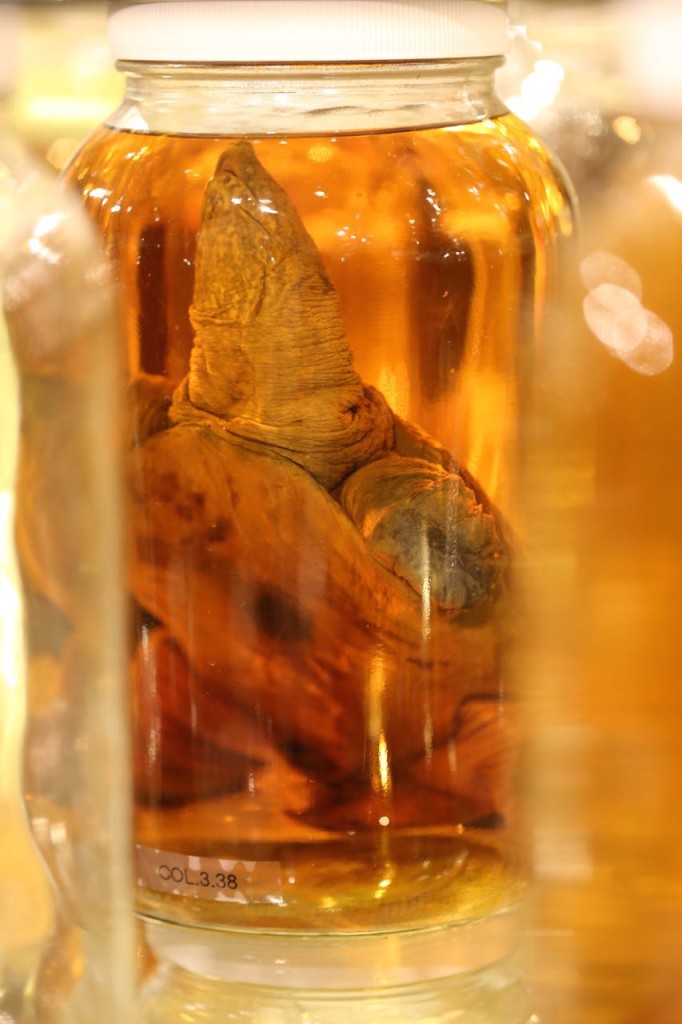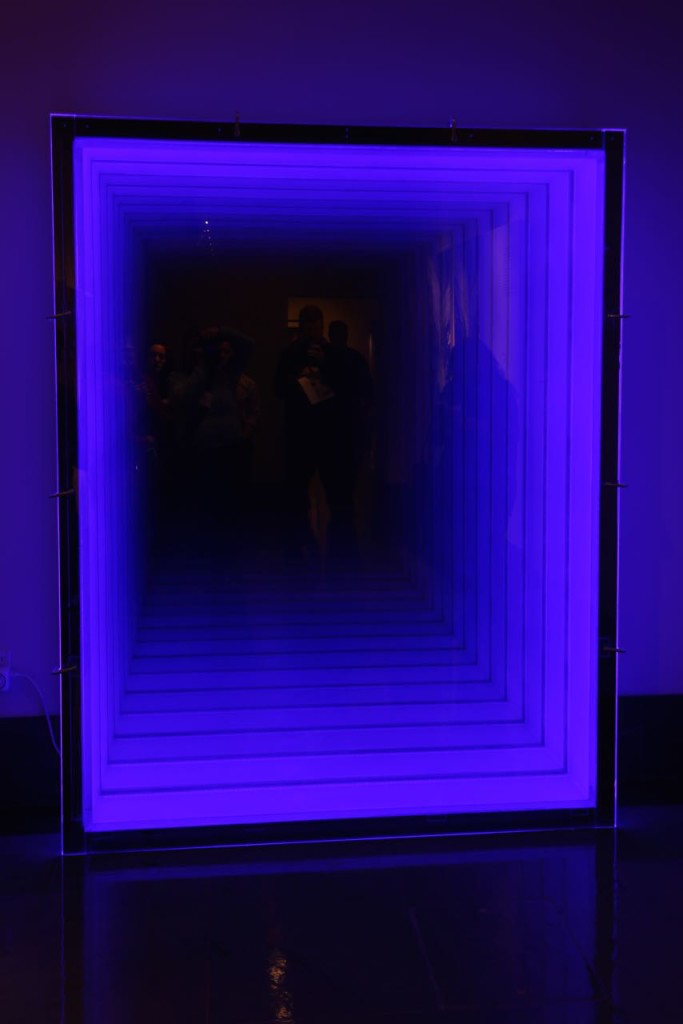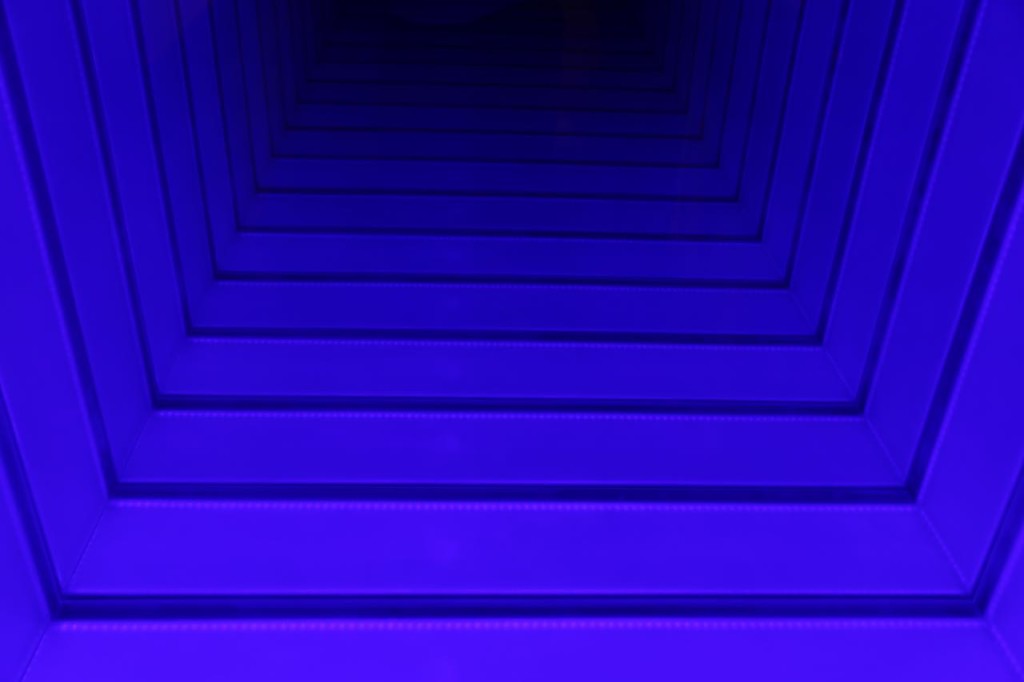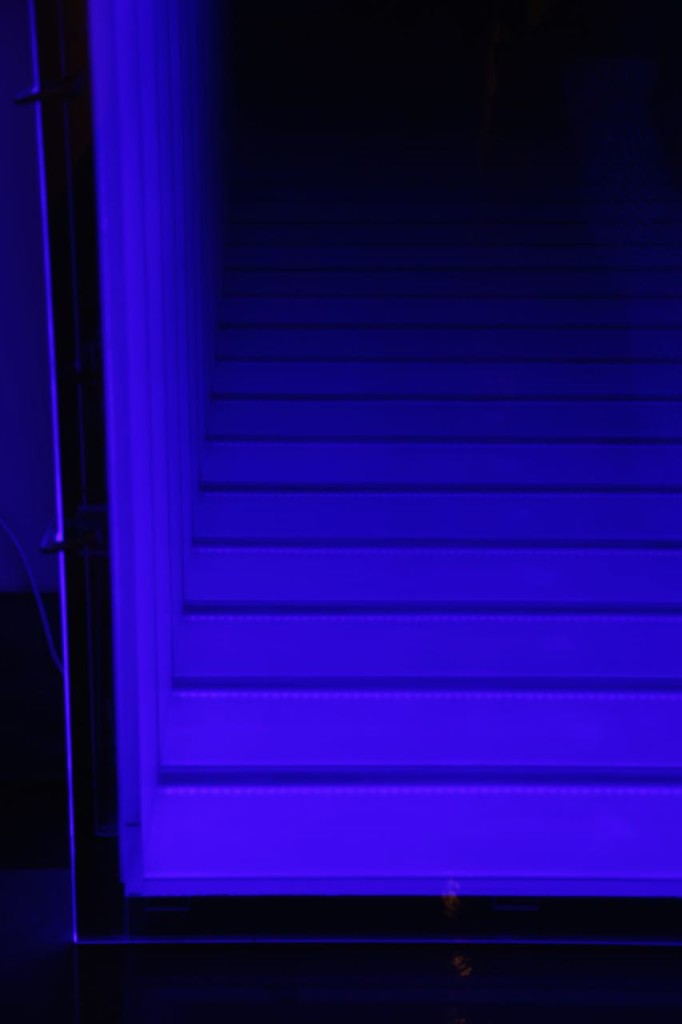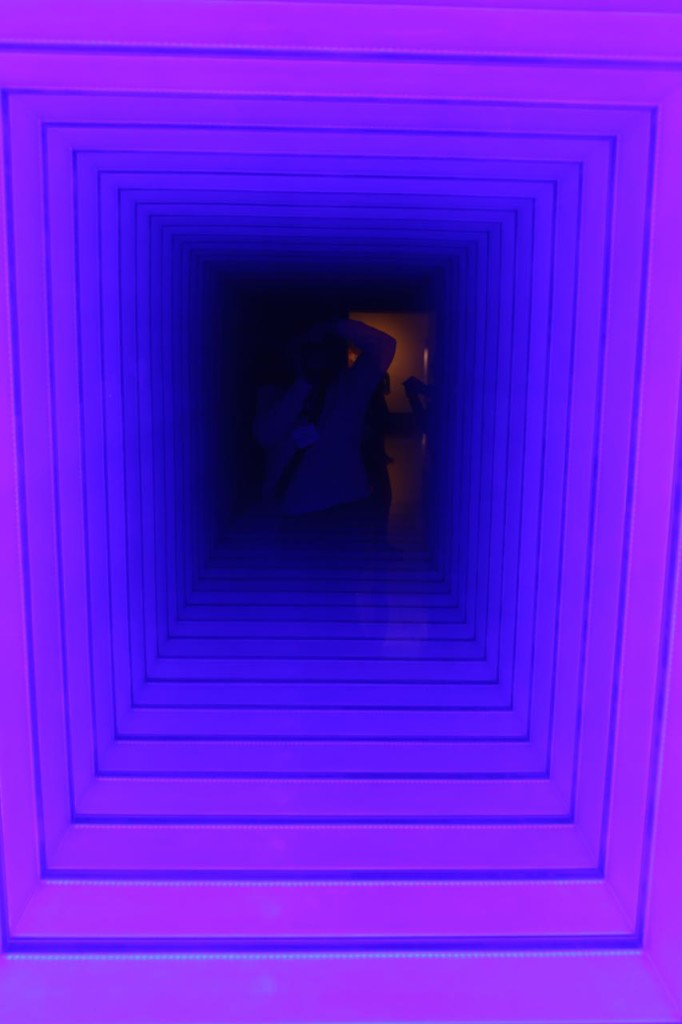There is an art exhibit at the National Academy of Sciences called Sentient Chamber that is unlike anything I have seen before. It reminds me of a gigantic hairy caterpillar. It kind of looks like technology and science based items hung as a chandelier among other items I associate more wind chimes. It is interactive because as people get close and walk through it, lights turn on, sounds are made, and certain items move or vibrate. I really can’t describe, but it is beautiful and interesting to look at. It makes really cool shadows on the ceiling, walls, and on itself. It also makes some really cool reflections in itself.
Tag Archives: Art
It’s a Pipe
I went to a reception for a new(-ish) exhibit with the Culture Programs of the National Academy of Sciences. The exhibit are paintings by Jonathan Feldschuh that are inspired by the Large Hadron Collider. The paintings are acrylic on mylar, and they are quite gorgeous. While I’m sure my art-knowledgable friends will correct my terminology, to me, they look like impressionists paintings of very high-tech subjects. I love impressionism art, and of course, I love technology, so I really like these paintings. My friends R, J, and I were discussing this one painting that R and I both rather liked. I said I really like the way the perspective of the pipe or wires going off into the tunnel. I questioned whether it was a pipe or a bundle of wires. This is the conversation that ensued.
R: It’s not a pipe. It’s where the collisions occur.
Me: It’s a pipe then.
R: No, it’s not solid.
Me: Pipes aren’t solid.
R: Yes, but it’s different.
J: It’s more high tech.
Me: It’s a pipe.
R: There aren’t fluids flowing through it. It’s particles flowing through it and colliding.
Me: It’s still a pipe.
R: It’s not a pipe because the particles are in a vacuum.
Me: It’s a pipe. Those things at banks where the little container at the drive through is pushed through a pipe is pushed through a vacuum. It’s still a pipe.
R: [sighs] Ok, it’s a pipe.
It should be noted that according the CERN website, “The beams travel in opposite directions in separate beam pipes – two tubes kept at ultrahigh vacuum.” Thus, it’s a pipe. However, in R’s defense, I have a B.S. in chemical engineering, so everything is pretty much a pipe or a tank to me. Also, everything can be fixed with a hammer, but that is another story.
Istanbul Archaeological Museums
The Istanbul Archaeological Museum was undergoing renovation when we went, so I don’t think we saw all the different exhibits they have. It also was that part of the time I was there I felt like I was walking through a rat maze. In any event, it has some really nice exhibits. However my favorite part was actually the Tiled Kiosk next door. I find the name amusing because when I hear kiosk, I think of a little booth in the mall with someone trying to sell cell phone accessories or some pillow that is going to solve all my health problems. The Tiled Kiosk is pretty though and has walls covered with tile, stained glass windows, and other art.
Turkey: Hagia Sofia of Istanbul
Hagia Sofia is an amazing piece of architecture and art. It was a church that became a mosque that became a museum. The interior is covered with beautiful stone panels, carved stone, mosaics, and painted plaster. Much of the mosaics were covered with plaster and then painted centuries ago, but the revealed mosaics are intricate and beautiful. The painted plaster is quite beautiful also. The stone panels demonstrate the beauty of natural stone. Besides the actual decorative interior, the actual architectural form of the building with all its domes and arches is gorgeous and also amazing from an engineering standpoint. Considering the age of the building and the number of earthquakes the area has suffered, it is amazing that the building is still standing. Some earthquake damage can be seen such as a leaning column in a photograph below.
Turkey: Blue Mosque of Istanbul
While in Istanbul, our tour group visited the famous Blue Mosque. It is gorgeous. The exterior is beautiful, but the interior is even more beautiful. The interior is arches upon arches upon domes. Most of the interior is covered with gorgeous mainly blue and white tile, which gives the mosque it’s name.
Turkey: Rug Making Co-op
While our tour group was in the Ephesus area, we visited a rug making co-operative. The members make rugs by hand. The rugs are beautiful and intricate. They walked us through the process of how they make and dye the threads and then make the rugs. I rather liked the place because the person who was showing us all the steps readily admitted that the exhibits were for the tourists. They dye the threads elsewhere, but I like honesty in tour guides.
First they take silk cocoons and pull the strands out of them.
They dye the various threads using natural material. The wool is easier to dye than the silk.
They make the rugs on looms. Turkish rugs differ from all other rugs because they use a double knot. I couldn’t understand anything else they were doing other than that the person making the rugs has to count threads and follow a pattern the entire time.
They then showed us rugs in many different styles. They were all gorgeous.
Greece: Icon Workshop
Today, we visited an icon workshop. They make all the icons by hand, and they showed us all the many steps involved. First, they start with blocks of wood, the type of wood depending on the icon.
The wood is hand carved.
If the icon will have metal on it, the metal is then shaped into the desired form.
All painting is done on canvas, so the canvas is then stretched.
The foil is then added.
Bright powder pigments are used for the paint, and duck egg and vinegar are other ingredients.
The icon is then hand painted.
An example of a beautiful final product.
Rebecca Kamen: Fundamental Forces
Currently on display at the National Academy of Sciences is Fundamental Forces by Rebecca Kamen. Fundamental Forces is an exhibition of paintings and sculptures inspired the process of scientific discovery. The title Fundamental Forces refers to fundamental forces in physics: gravity, electromagnetism, and strong and weak nuclear interactions, and in my opinion, the exhibit really does provide a lovely representation of those fundamental forces. I loved the wire sculptures in particular as they were visually interesting and also looked like things I had studied in chemistry and physics class. Matter Informing Space reminds me of the Bohr model of the atom. The Doppler Effect is an interesting visualization of the Doppler effect, but it also reminds me of a vortex and the Coriolis effect. The sculptures also play with the light in wonderful ways. The shadows created by the wire sculptures and also Portal are incredibly interesting. If you are in the DC area, the exhibit is open until July 6, and it is free to see, so go.
Collapse
One of the exhibits, we visited during Cultural Programs of the Natural Academy of Sciences’s #NAS_sciart was Brandon Ballengée: Collapse. Collapse is a huge pyramid of specimen jars that contain species from the Gulf of Mexico that are in decline due to the 2010 BP Deepwater Horizon oil spill. It was interesting to be able to see numerous species up close, even if preserved, that I normally would never see. However, it was sad to think that all these species are in decline or at least affected by the Deepwater Horizon oil spill.
Void
I went to an Instameet at the National Academy of Sciences today, where we toured two art exhibits and also the building. One of the exhibits we toured was Imagining Deep Time, and one of the pieces of art in that exhibit is Chul Hyun Ahn’s Void. I have seen this exhibit before, and no matter how many times I see Void, it still freaks me out. It just does. The piece is made of cast acrylic, LED lights, hardware, and mirrors, and while it physically has a size of 90 x 71 1⁄2 x 12 1⁄4 inches, it looks like a tunnel that goes on forever. The photos I have posted below simply do not do it justice. I am very impressed by how the artist was able to create the vision effect, but when I stand in front of it, I keep waiting for Dr. Who, Spock, or some other science fiction character to come walking through the tunnel. I guess it kind of scares me. Yes, I am a wimp. A piece of art that is just lights, mirrors, and acrylic scares me.
Side note: The photo of Void with JD Talasek, the curator of Imagining Deep Time, in front of it, is the only photo posted below that I took with my iPhone. The rest of the photos I took with my Canon 6D. I note this because I find it interesting how the two cameras captured the light differently. The only manipulation I performed on my photos was cropping and some straightening.

